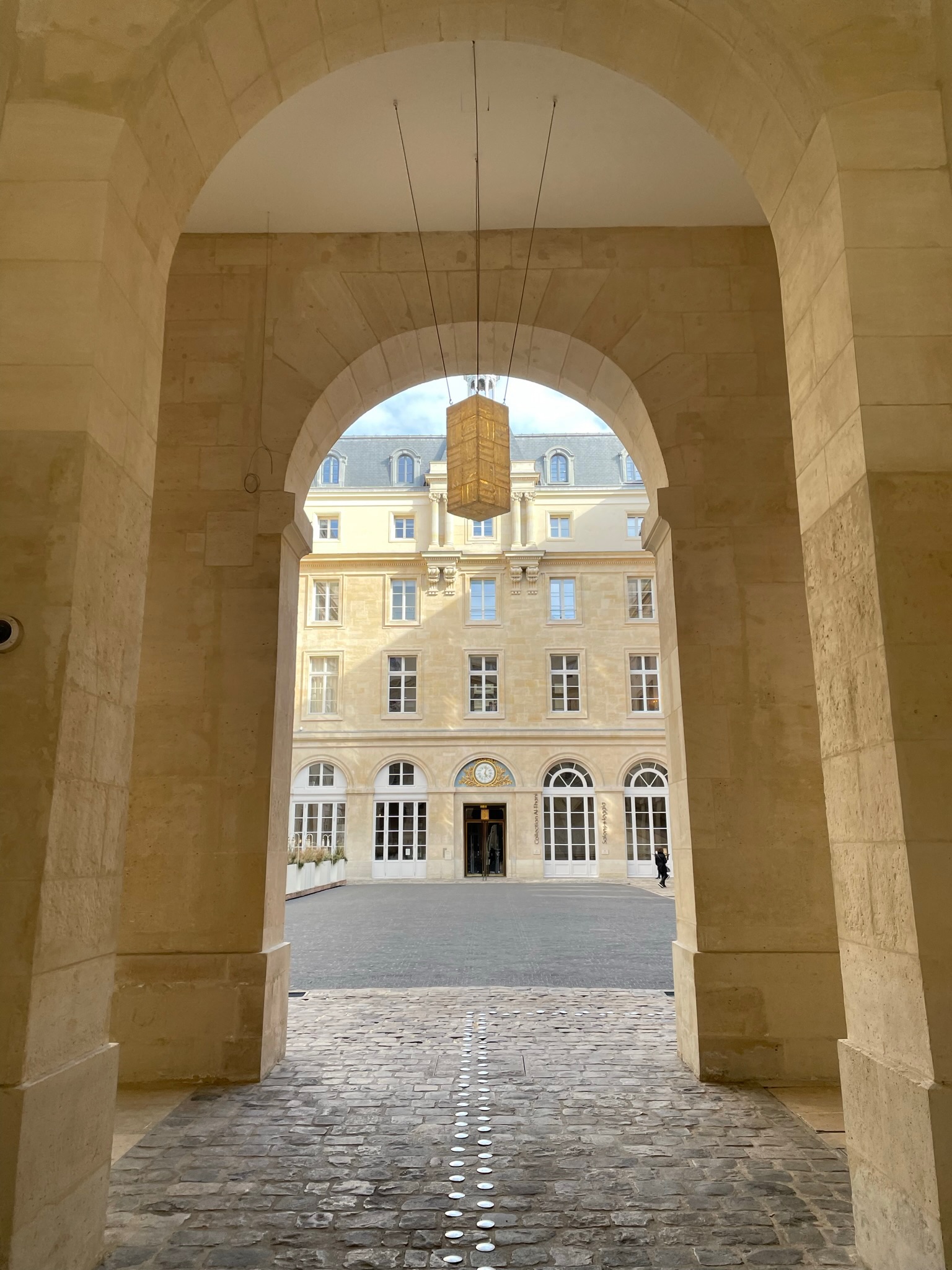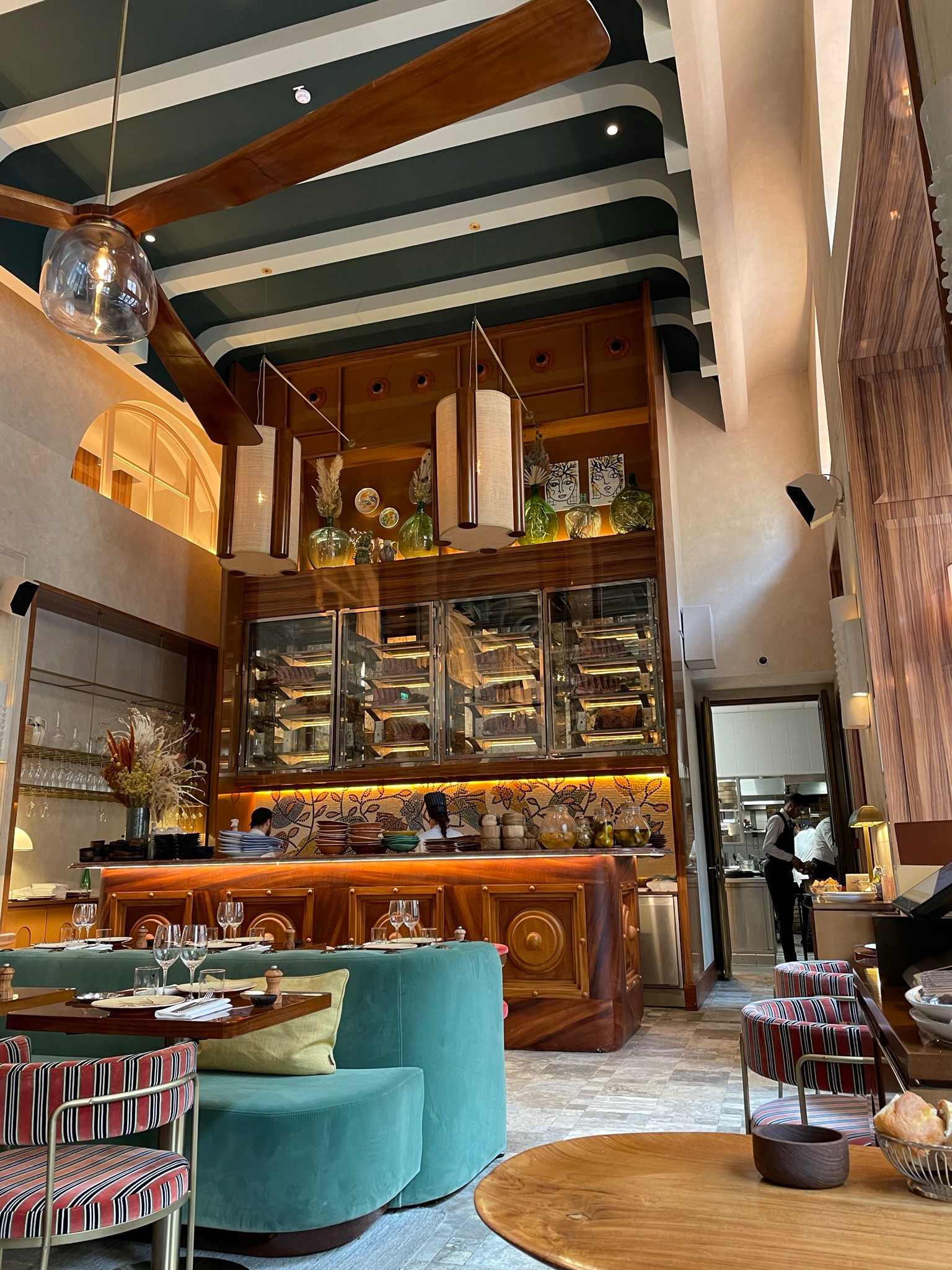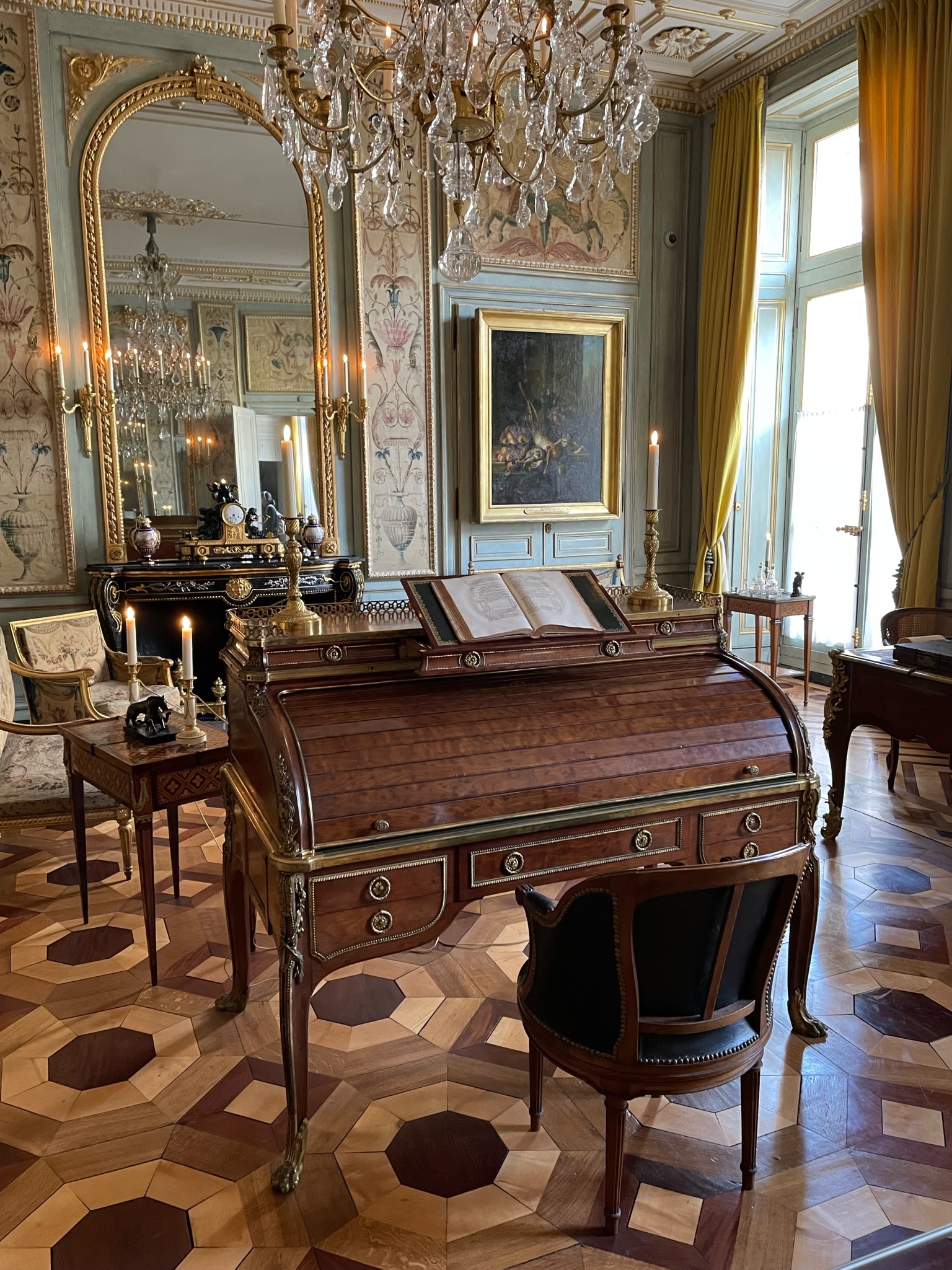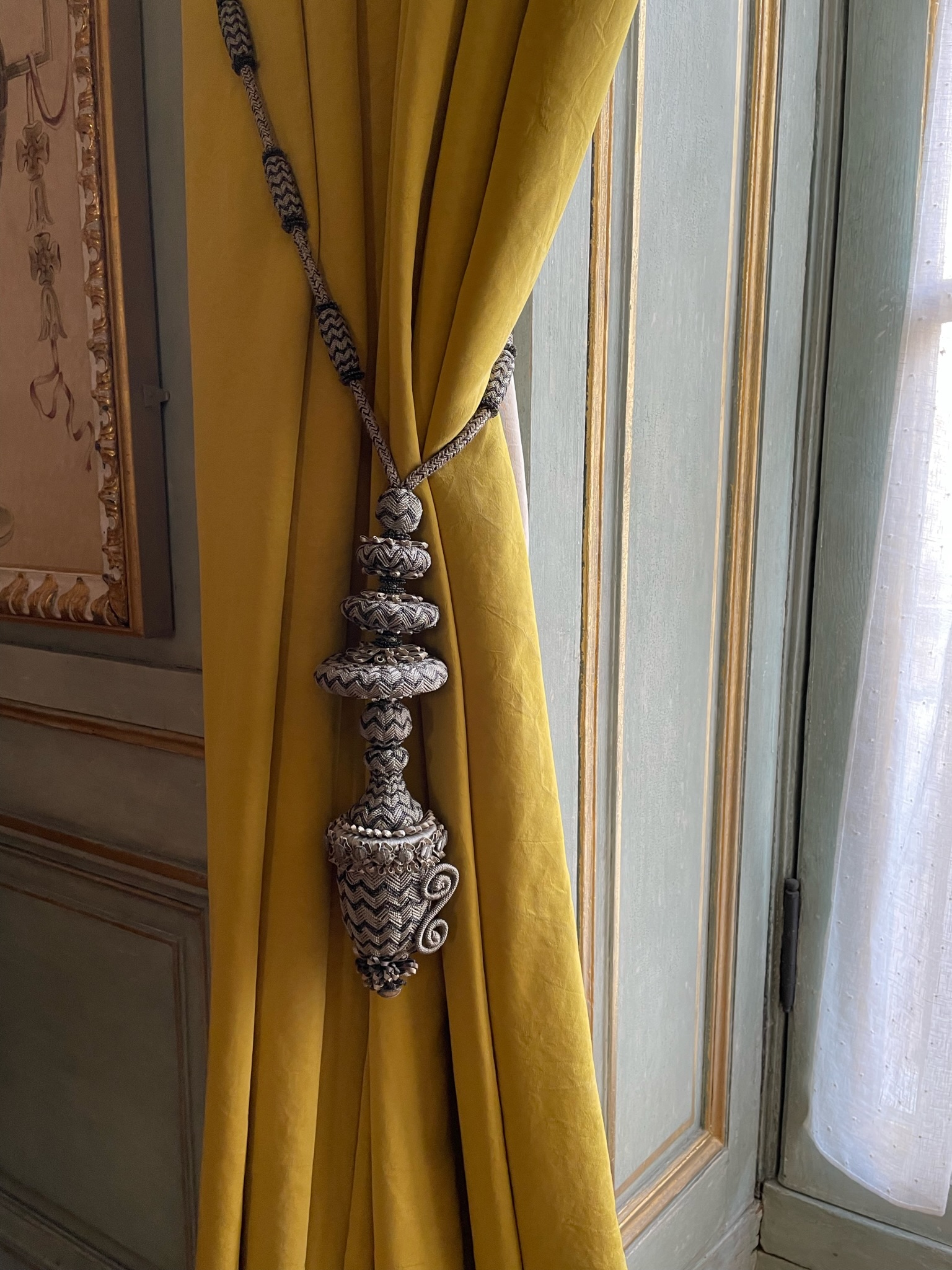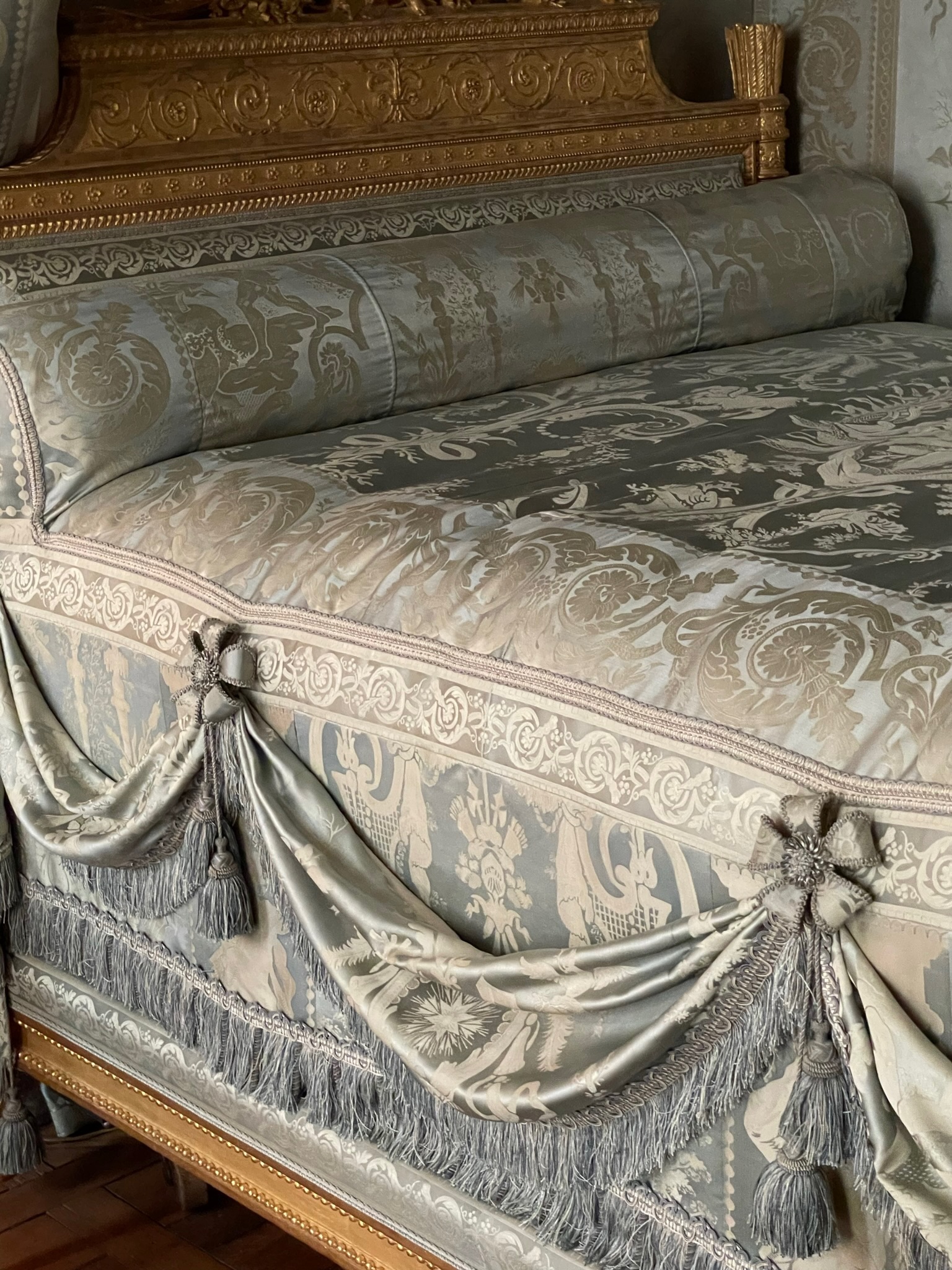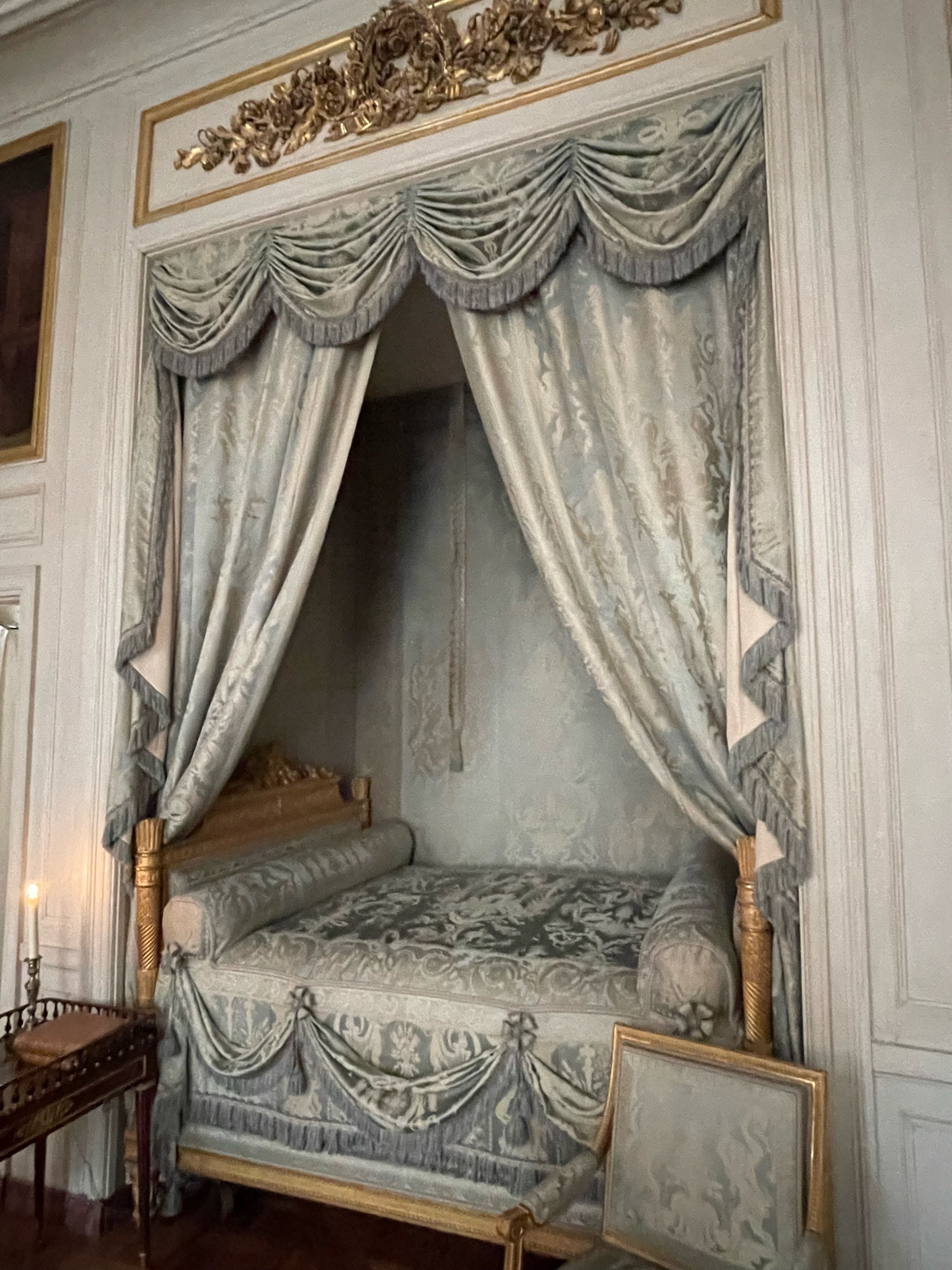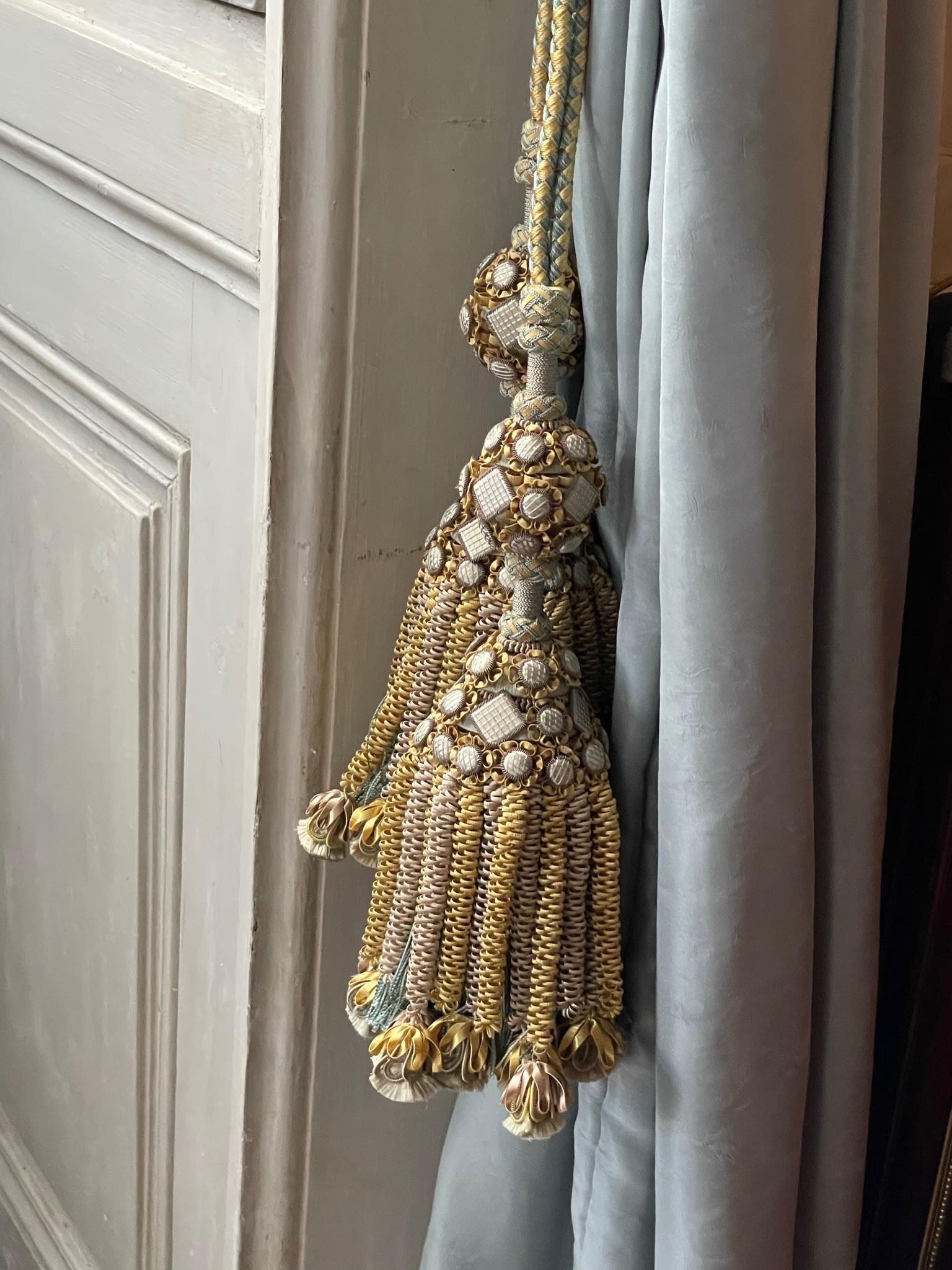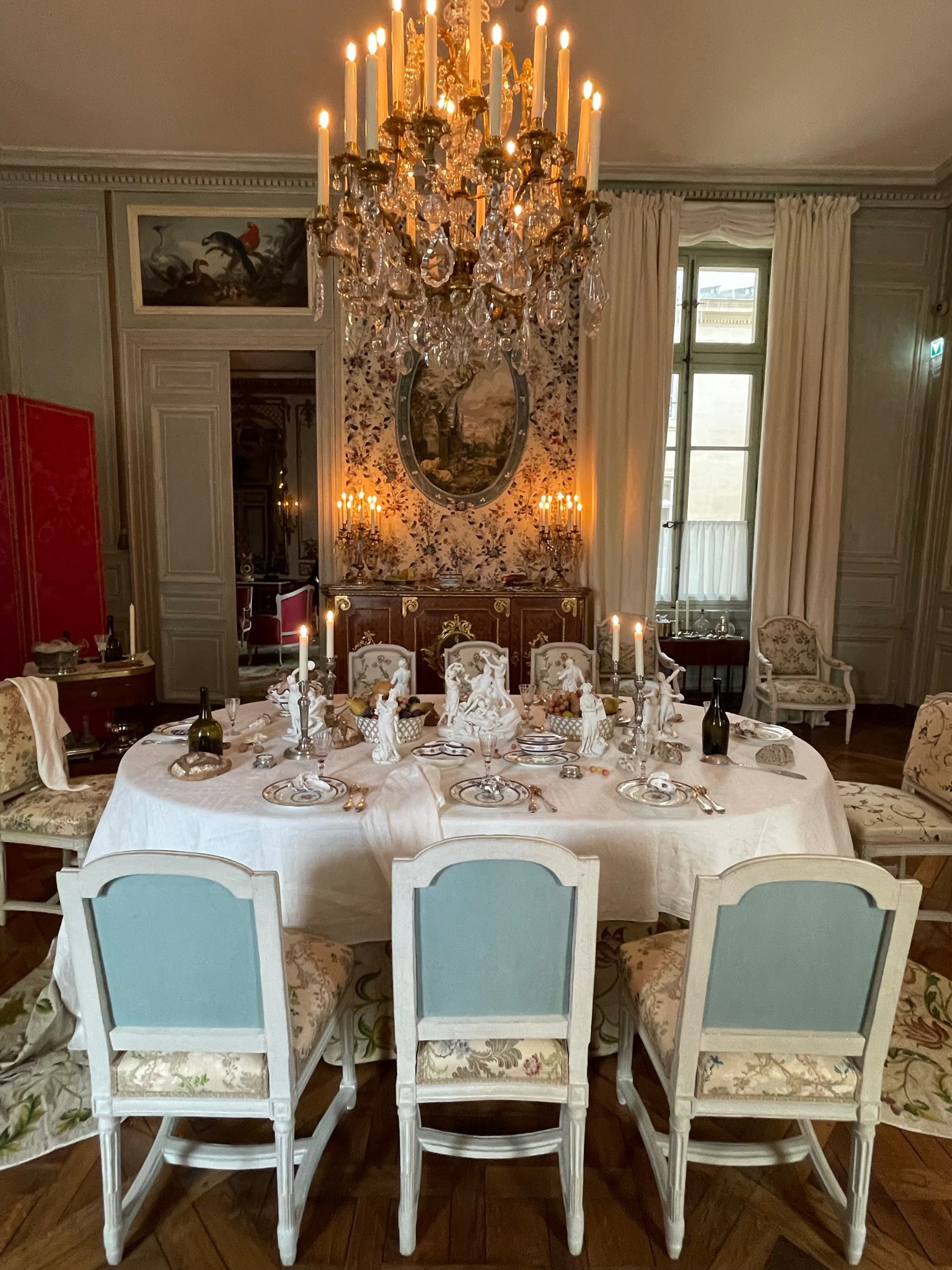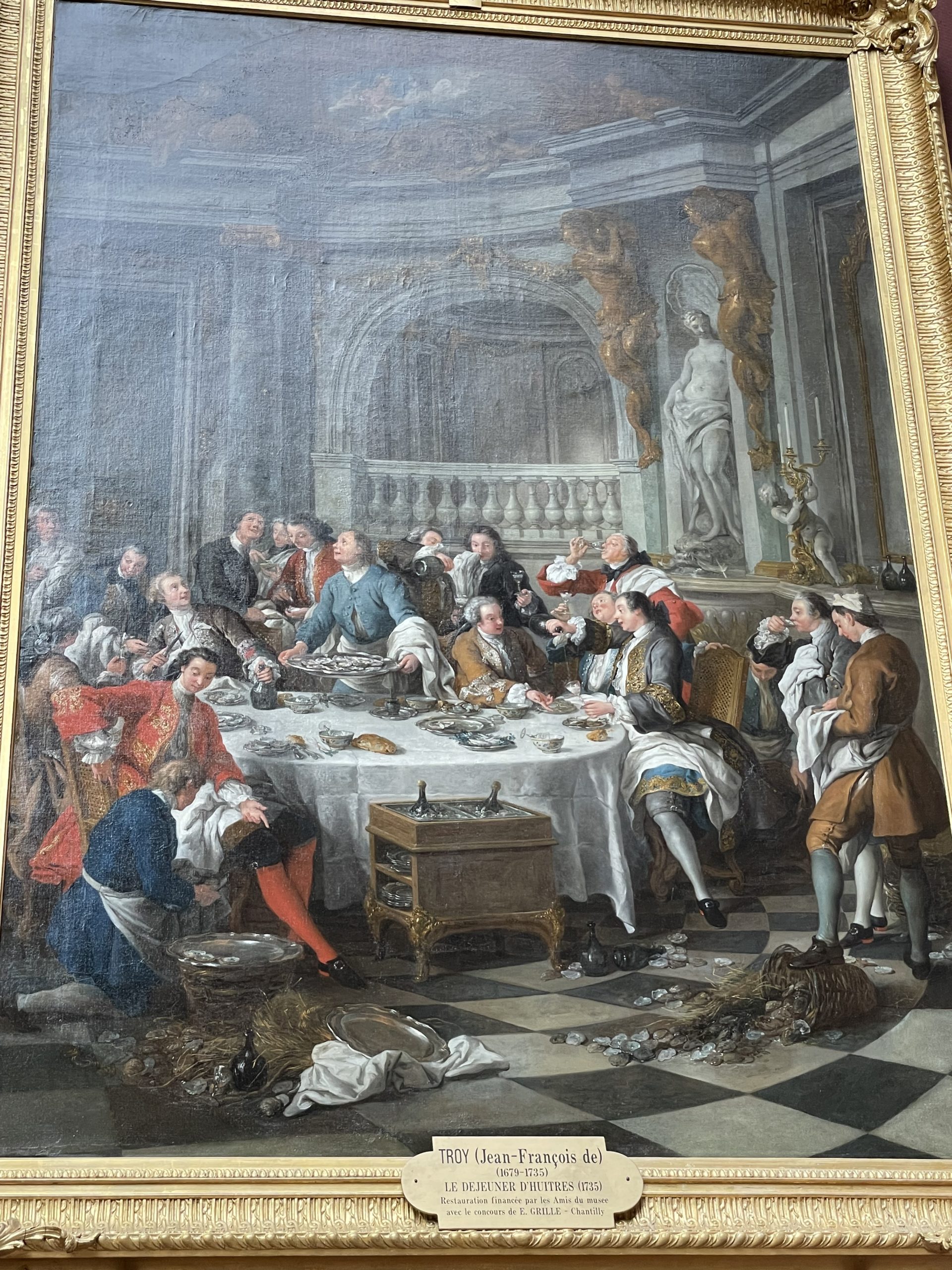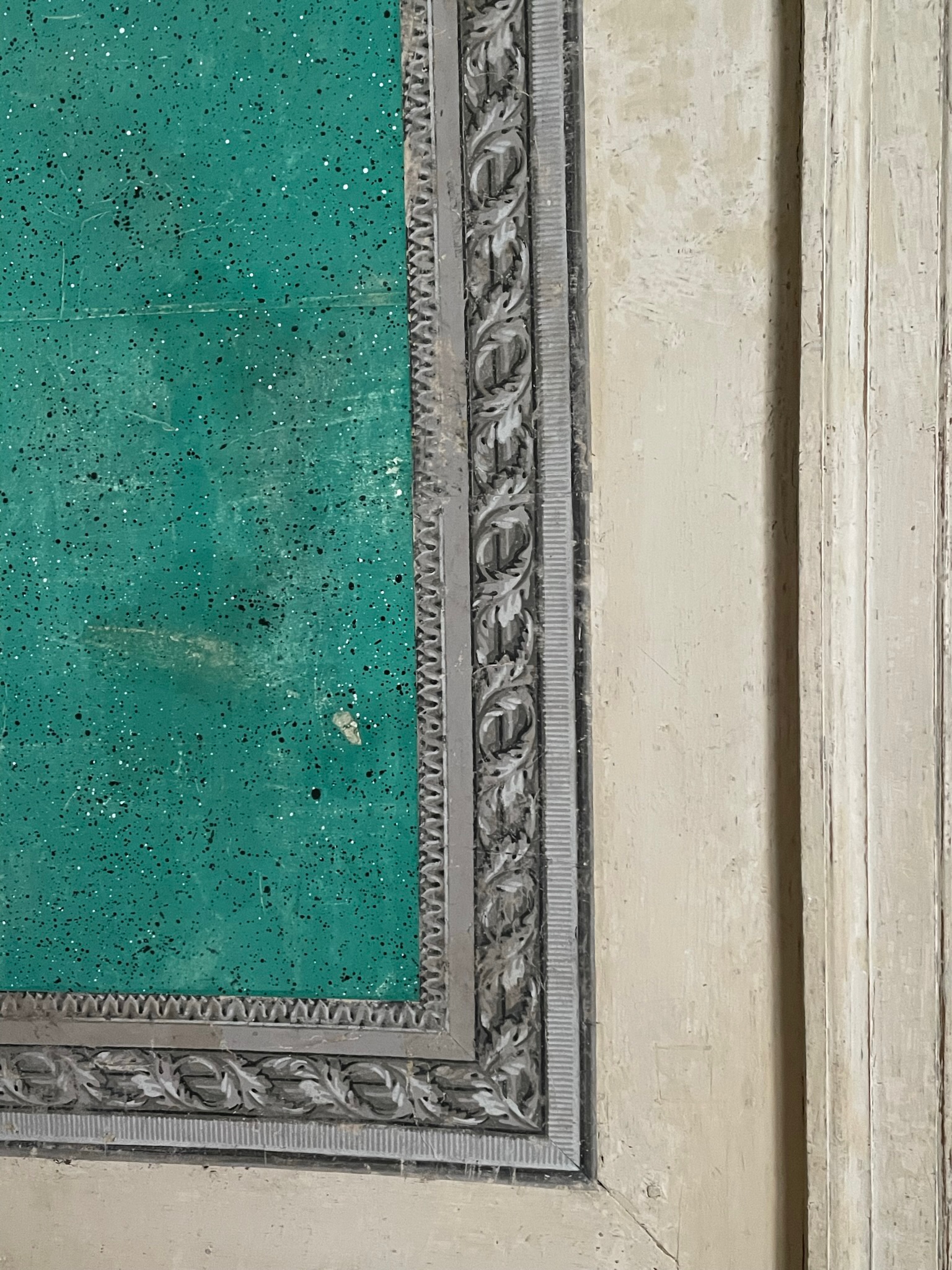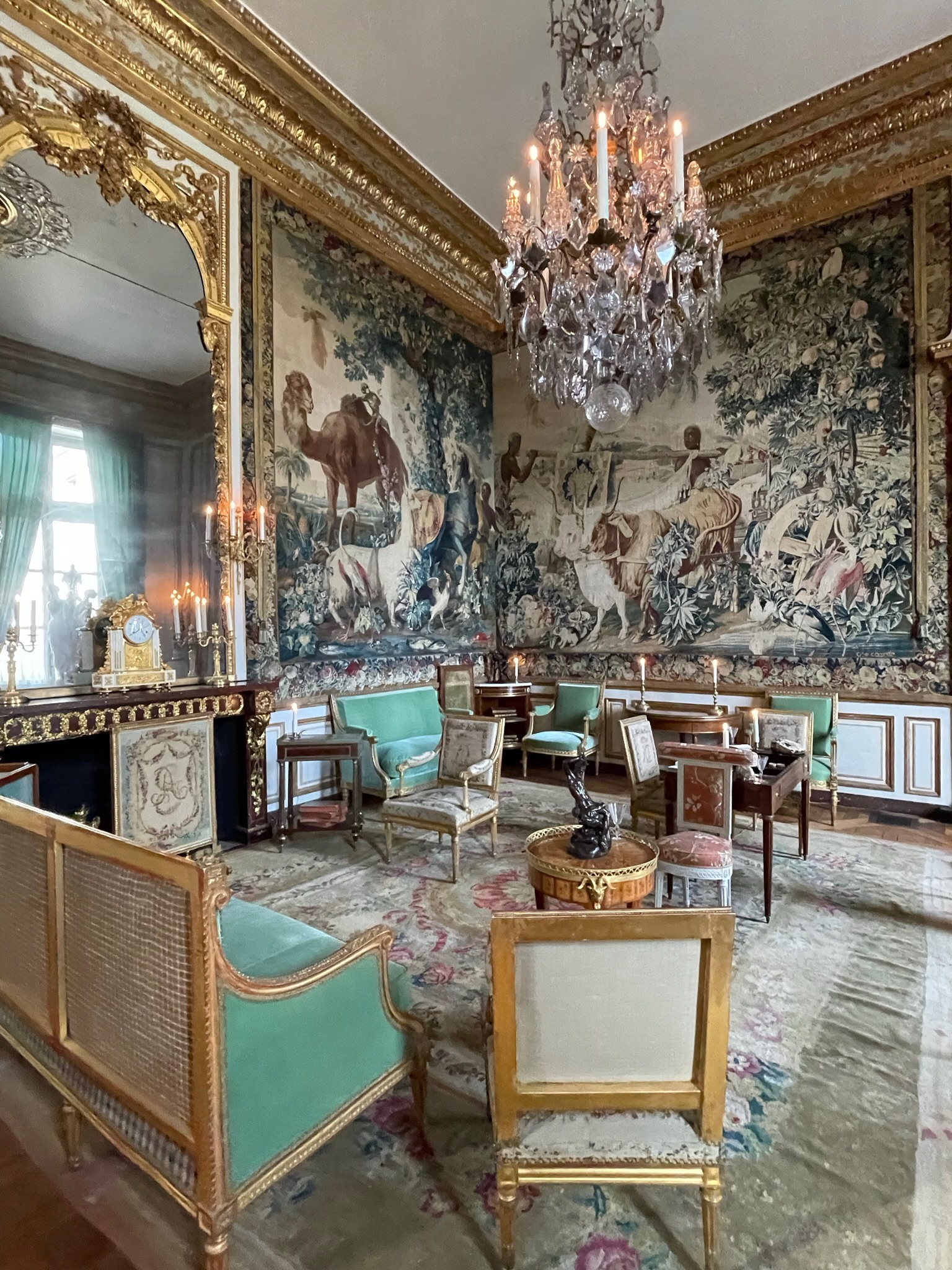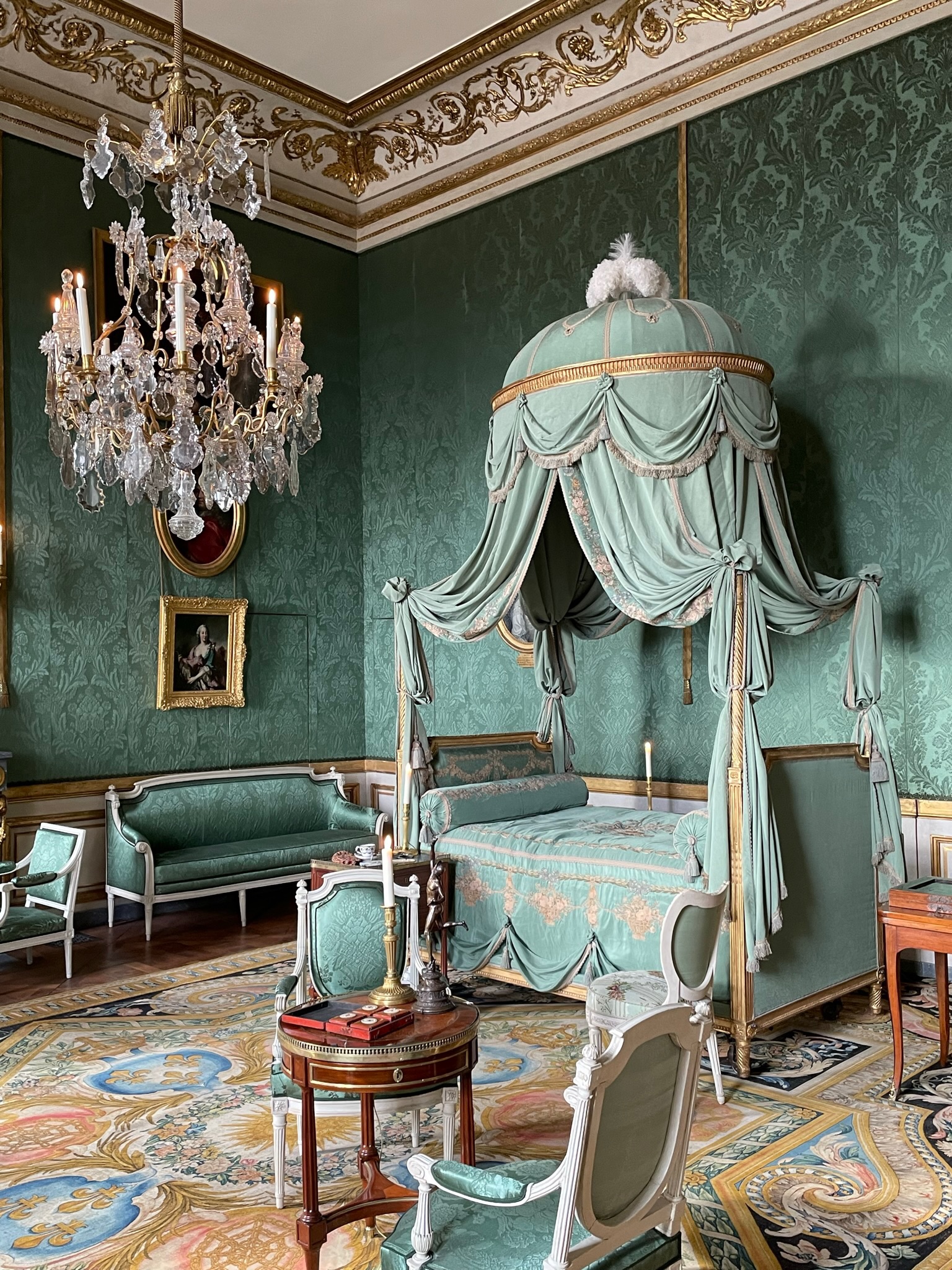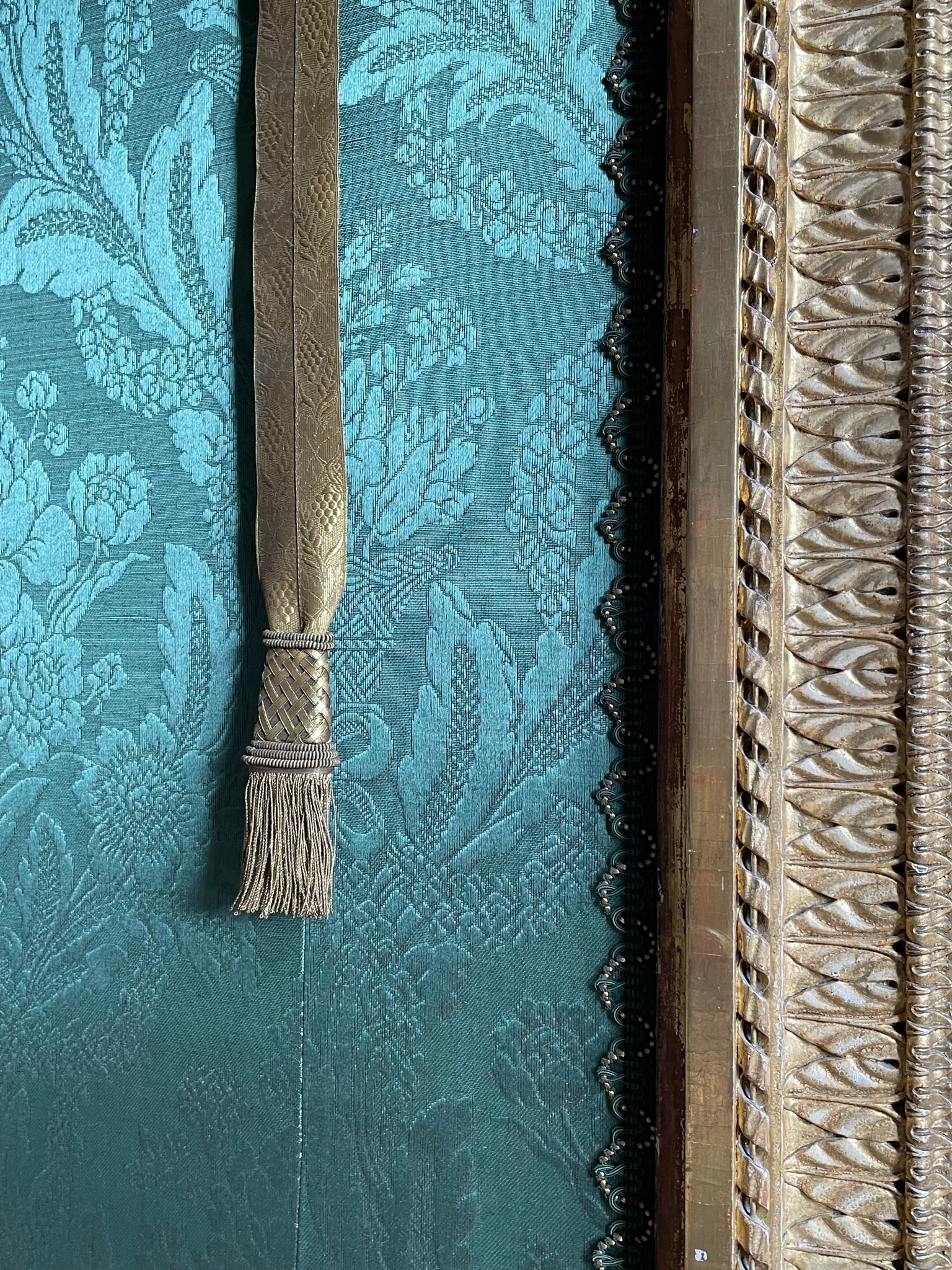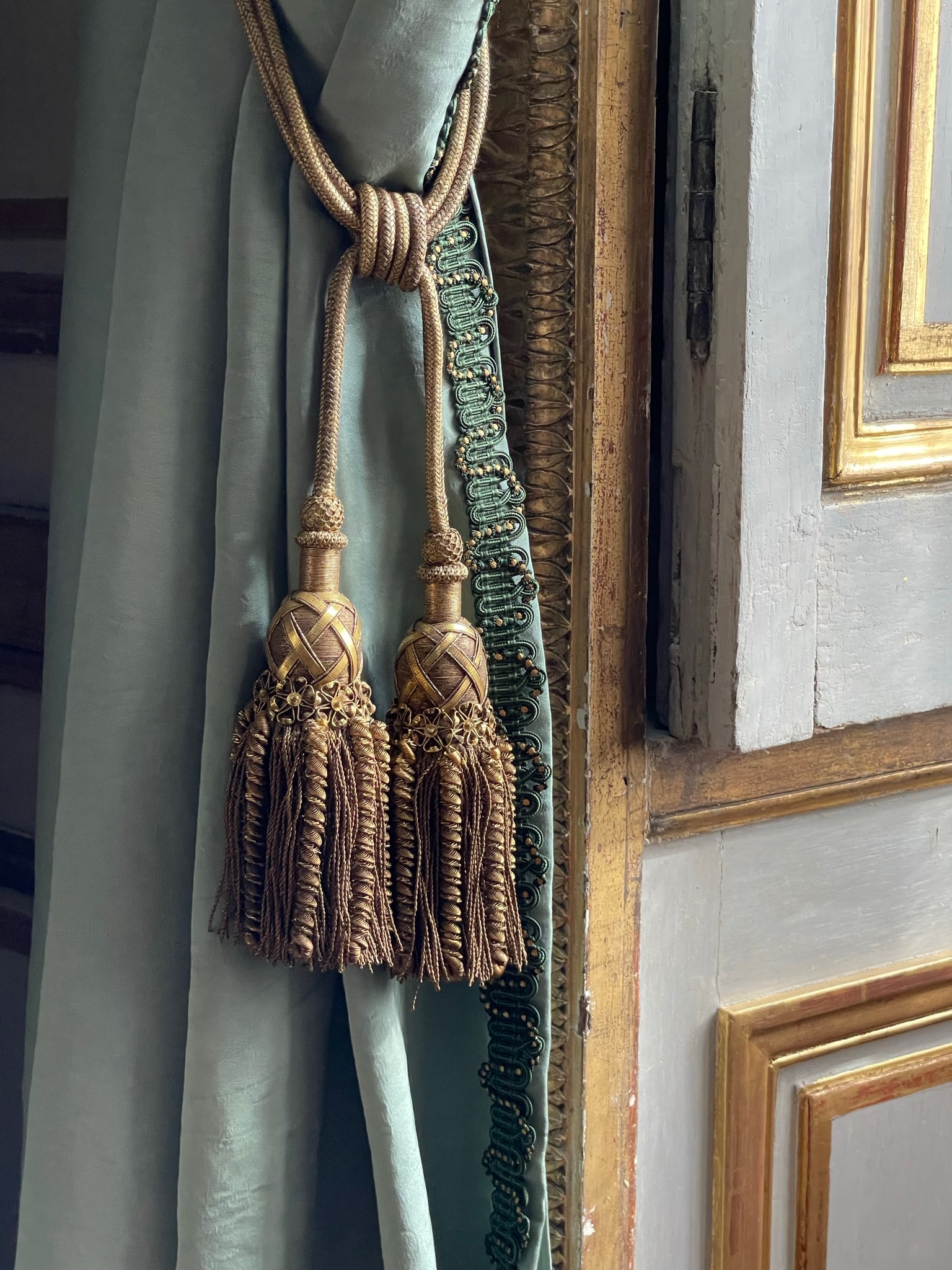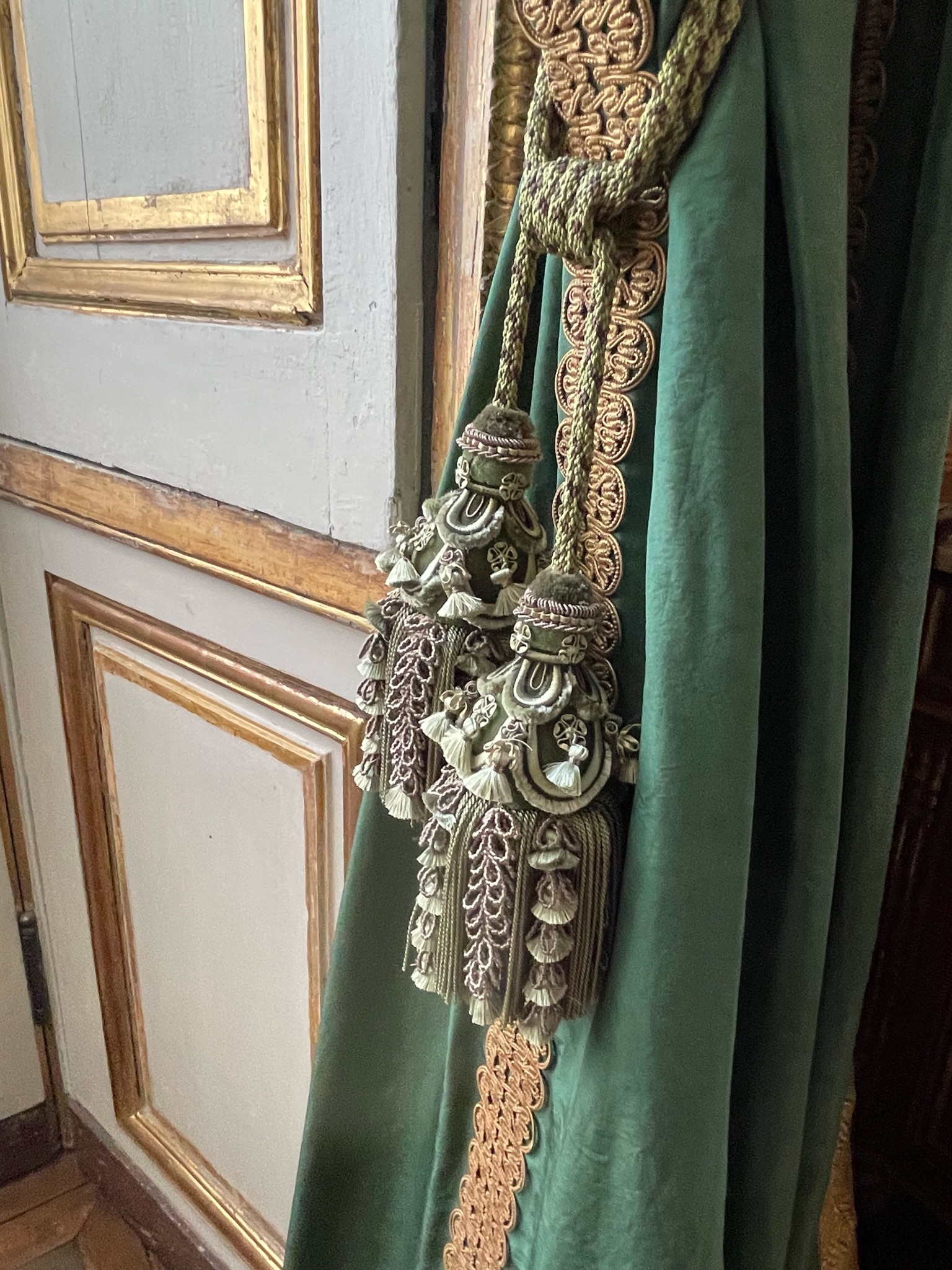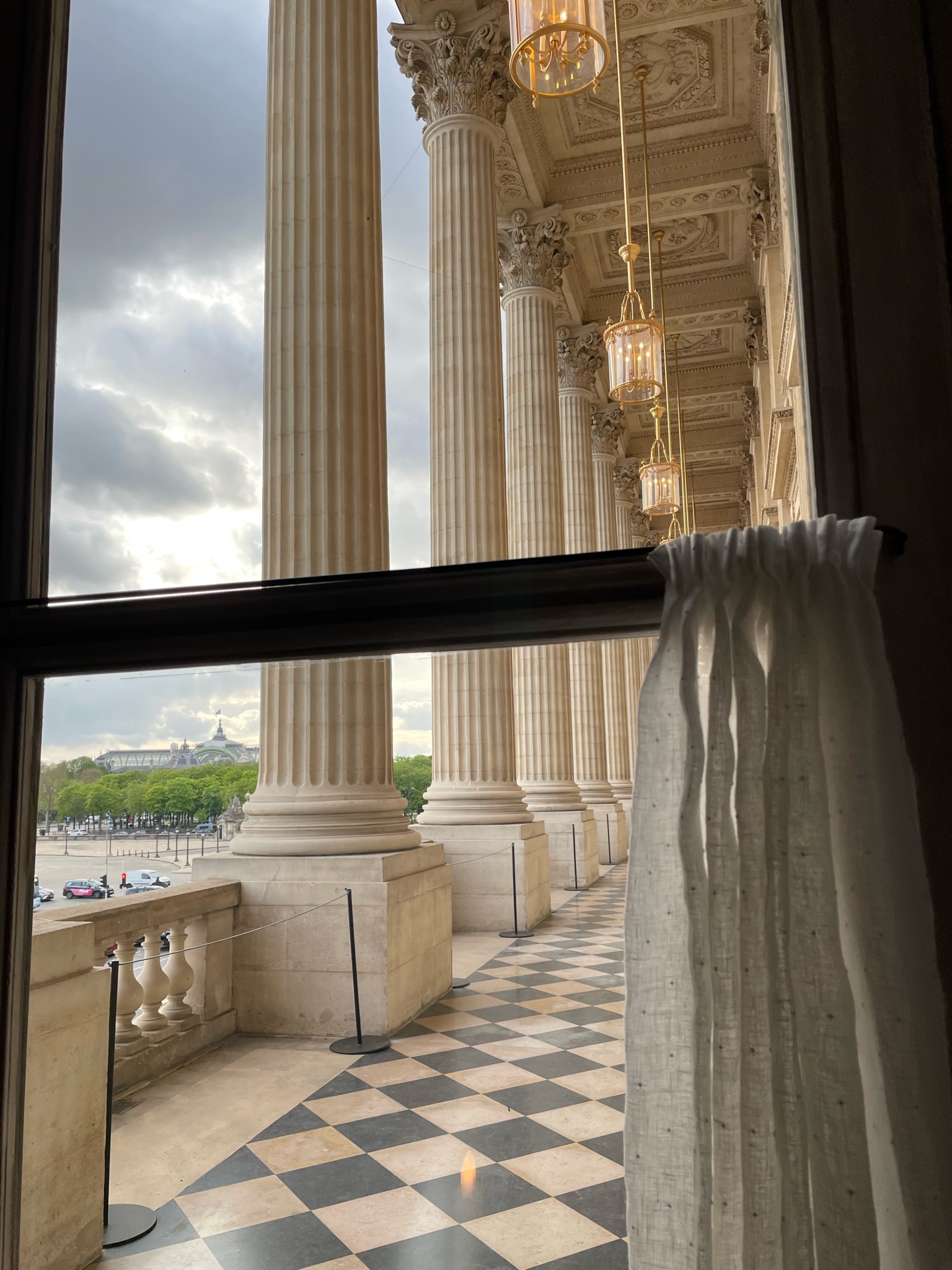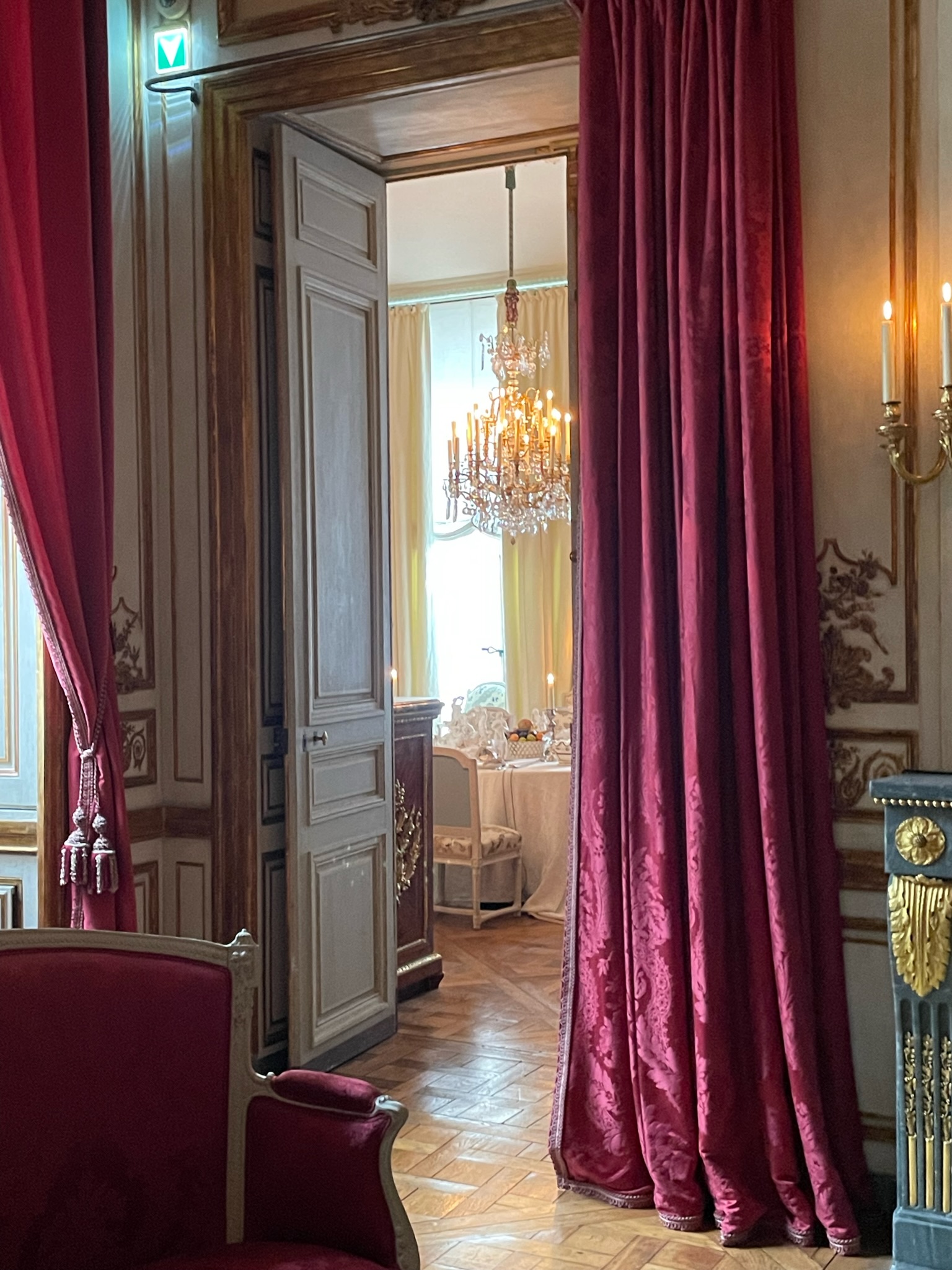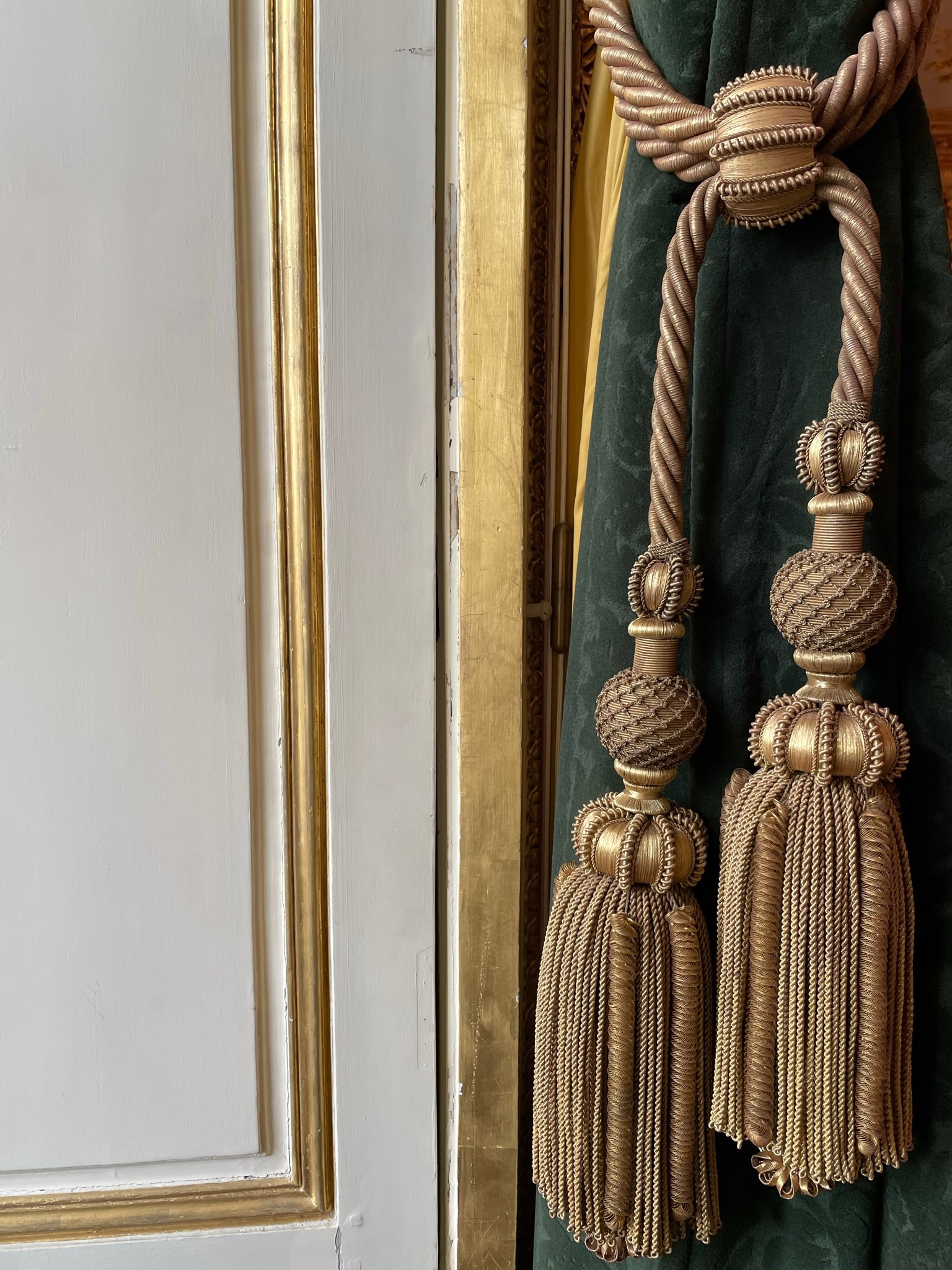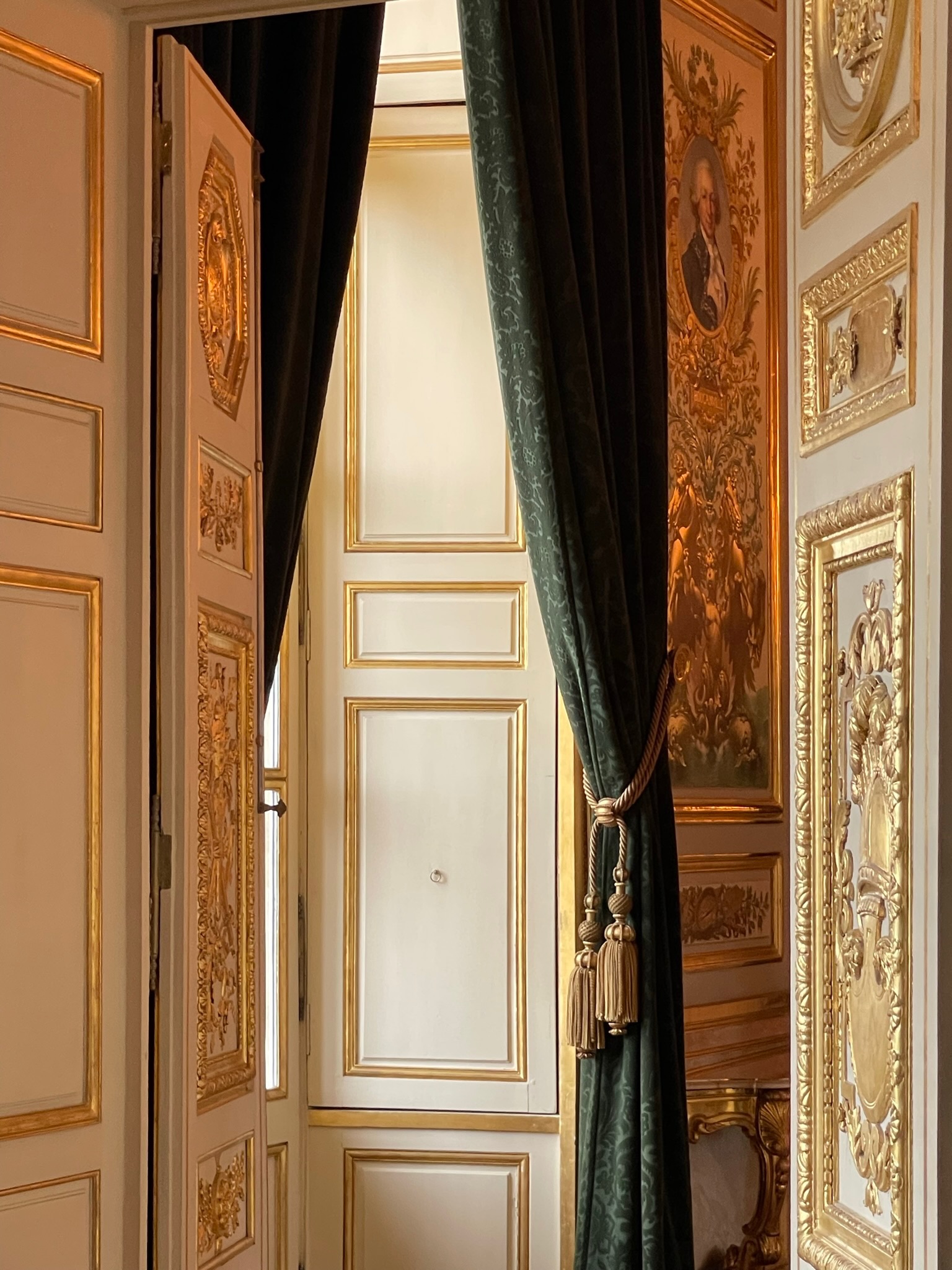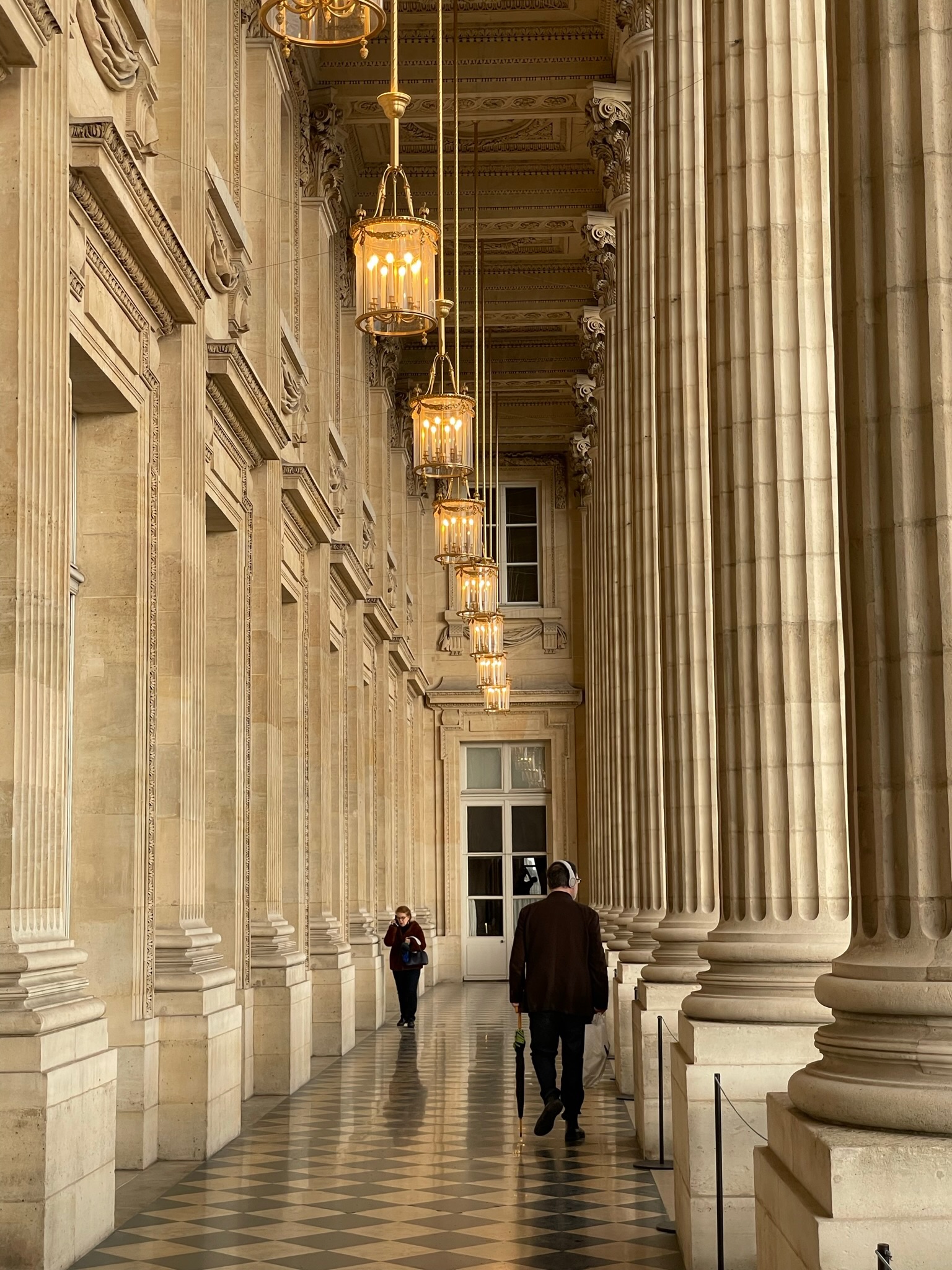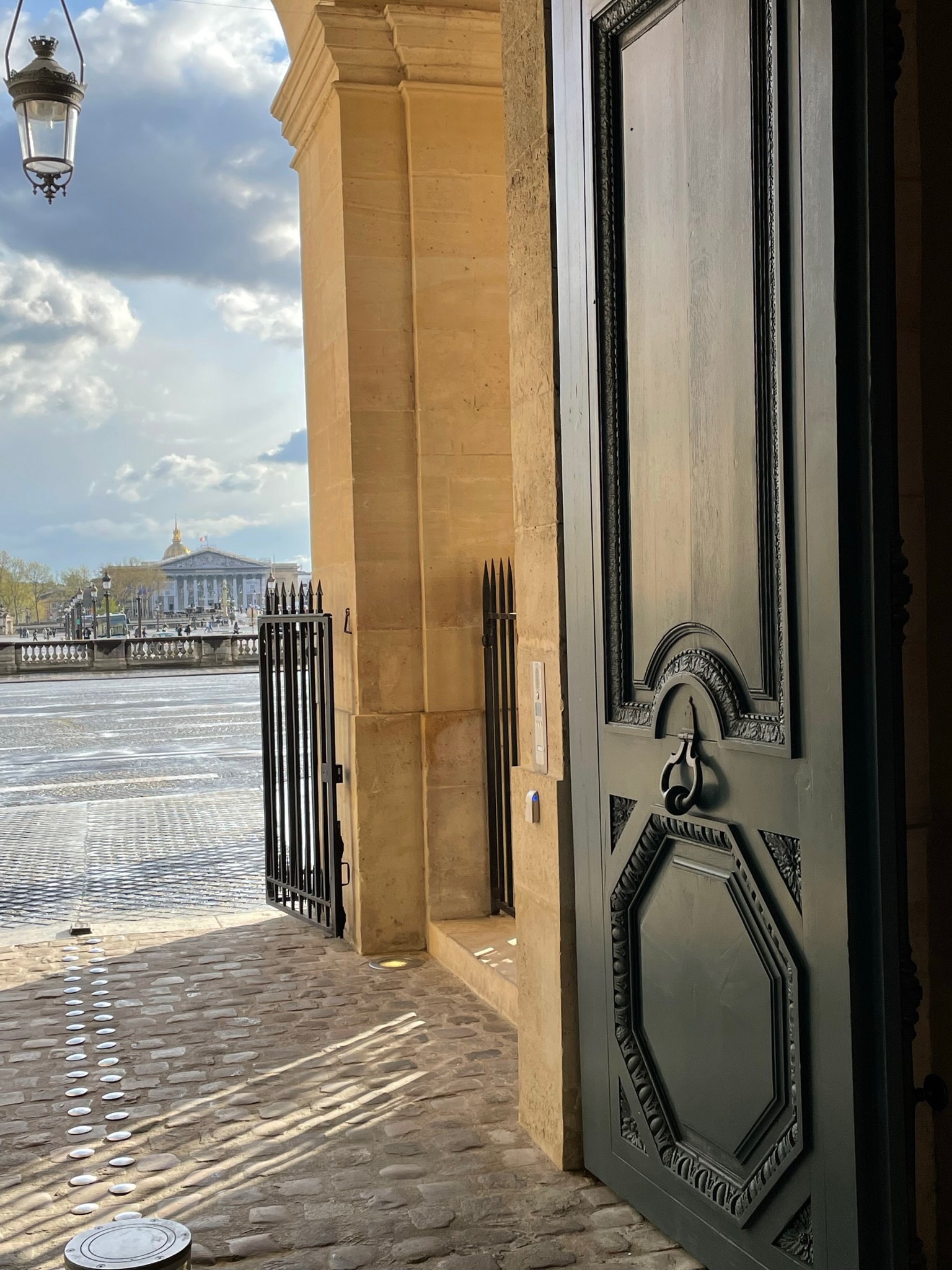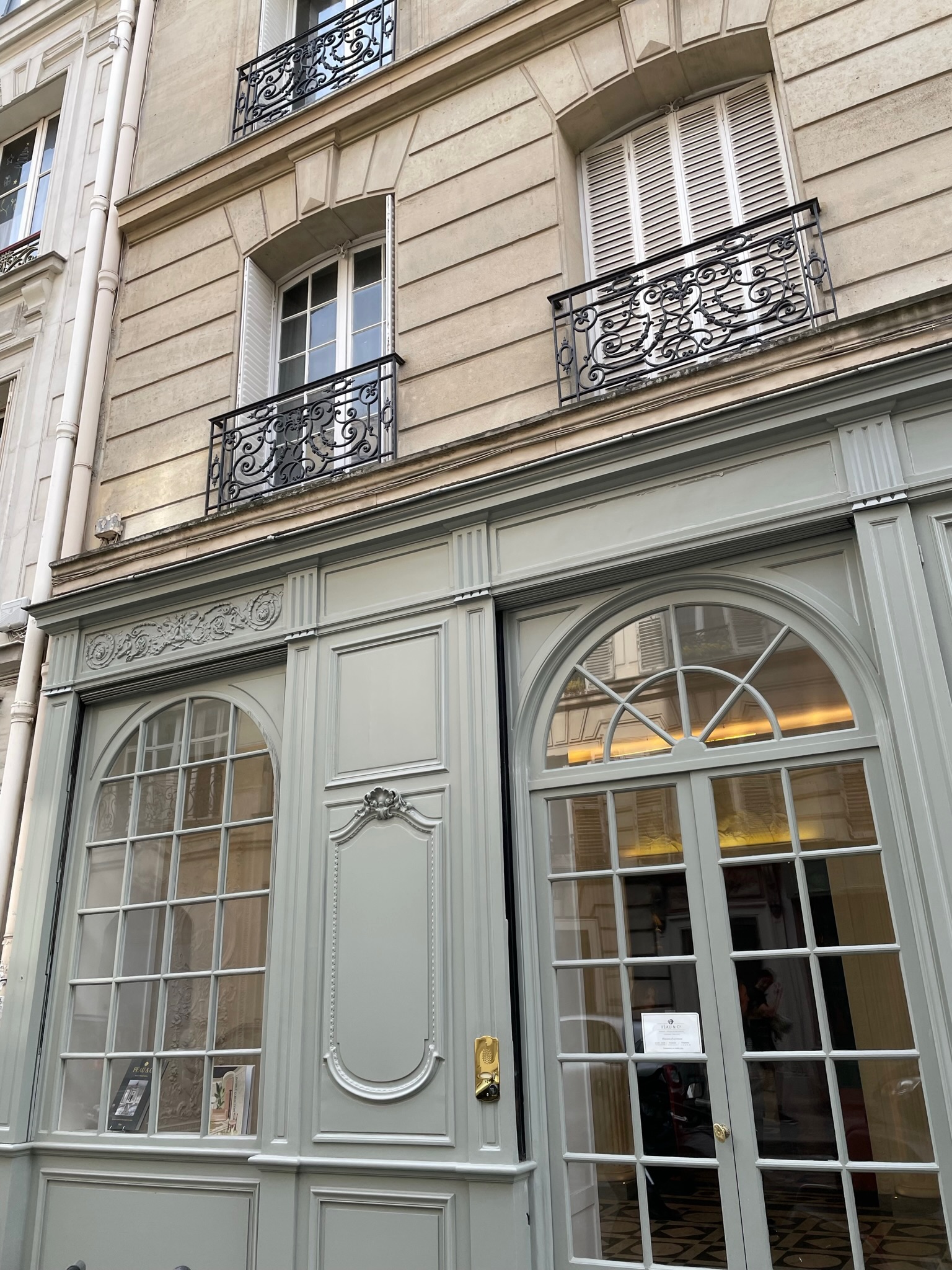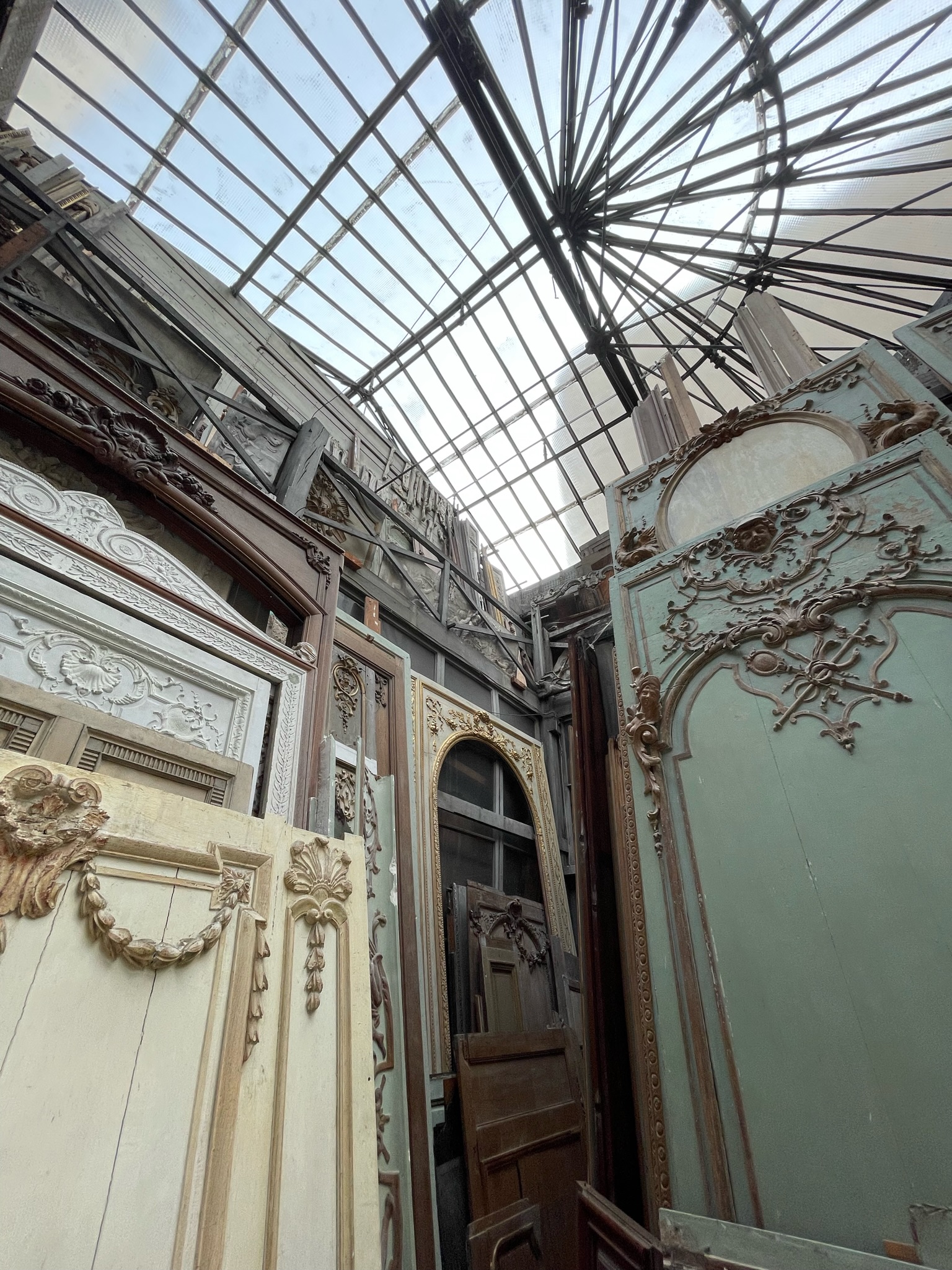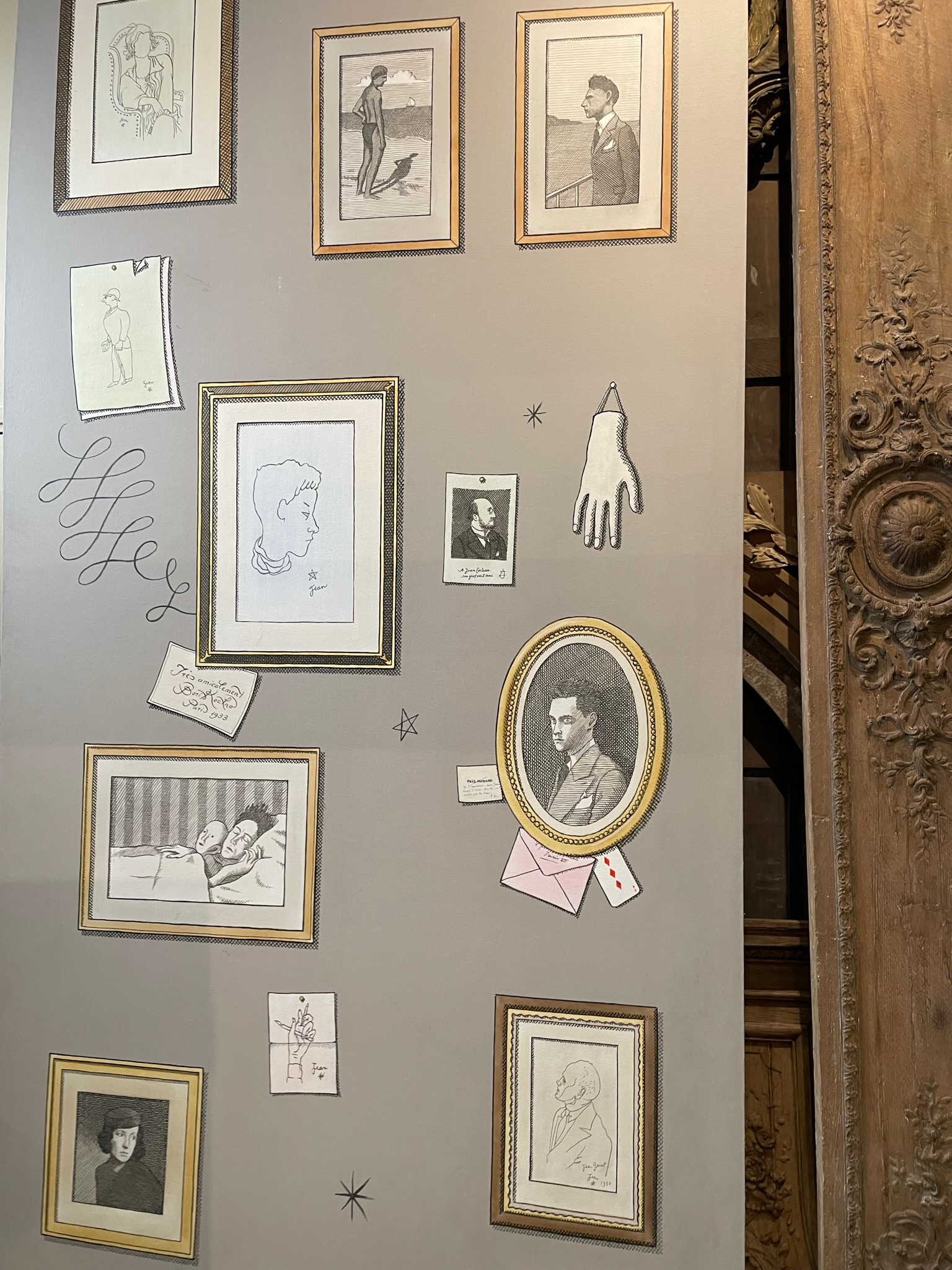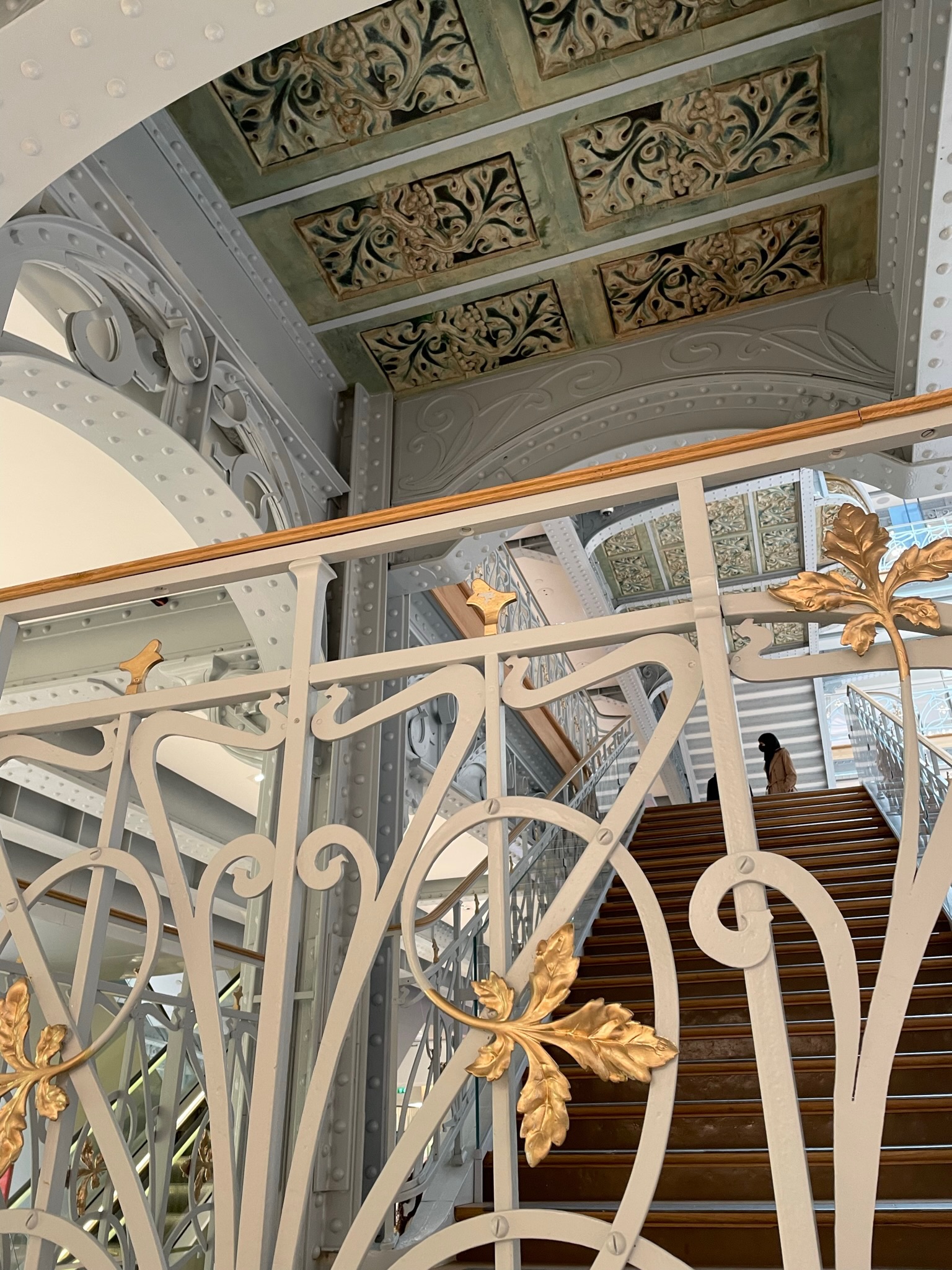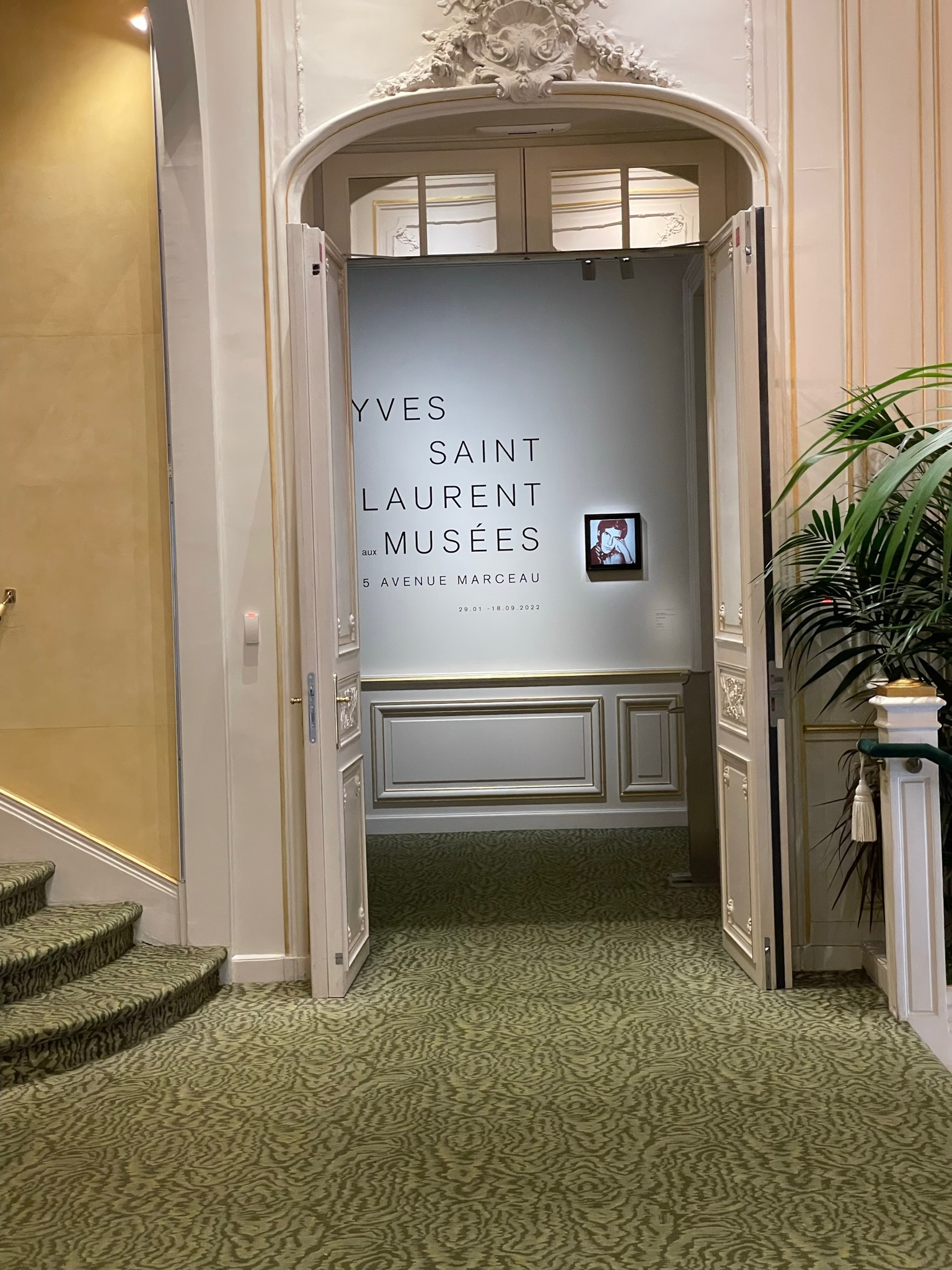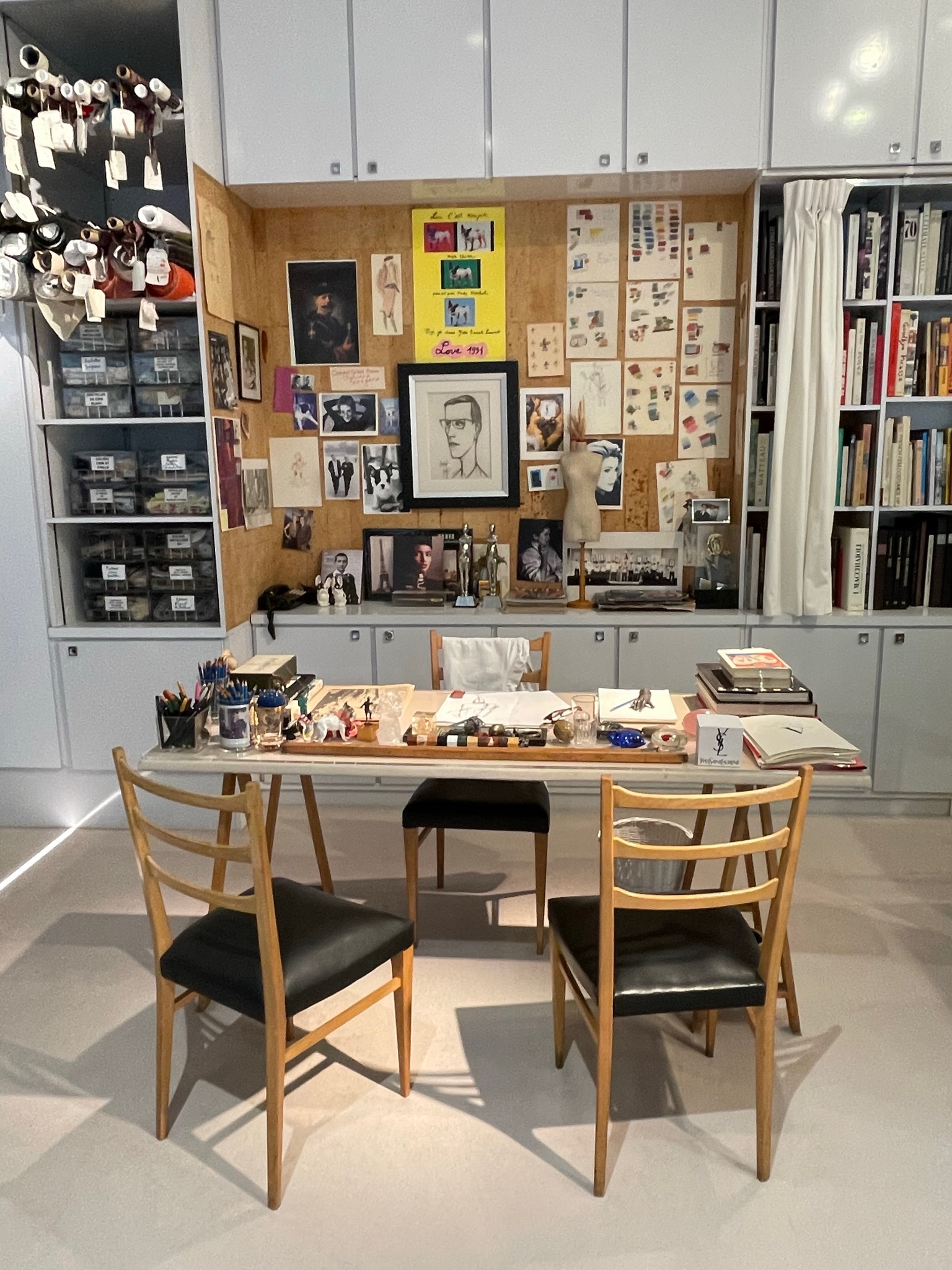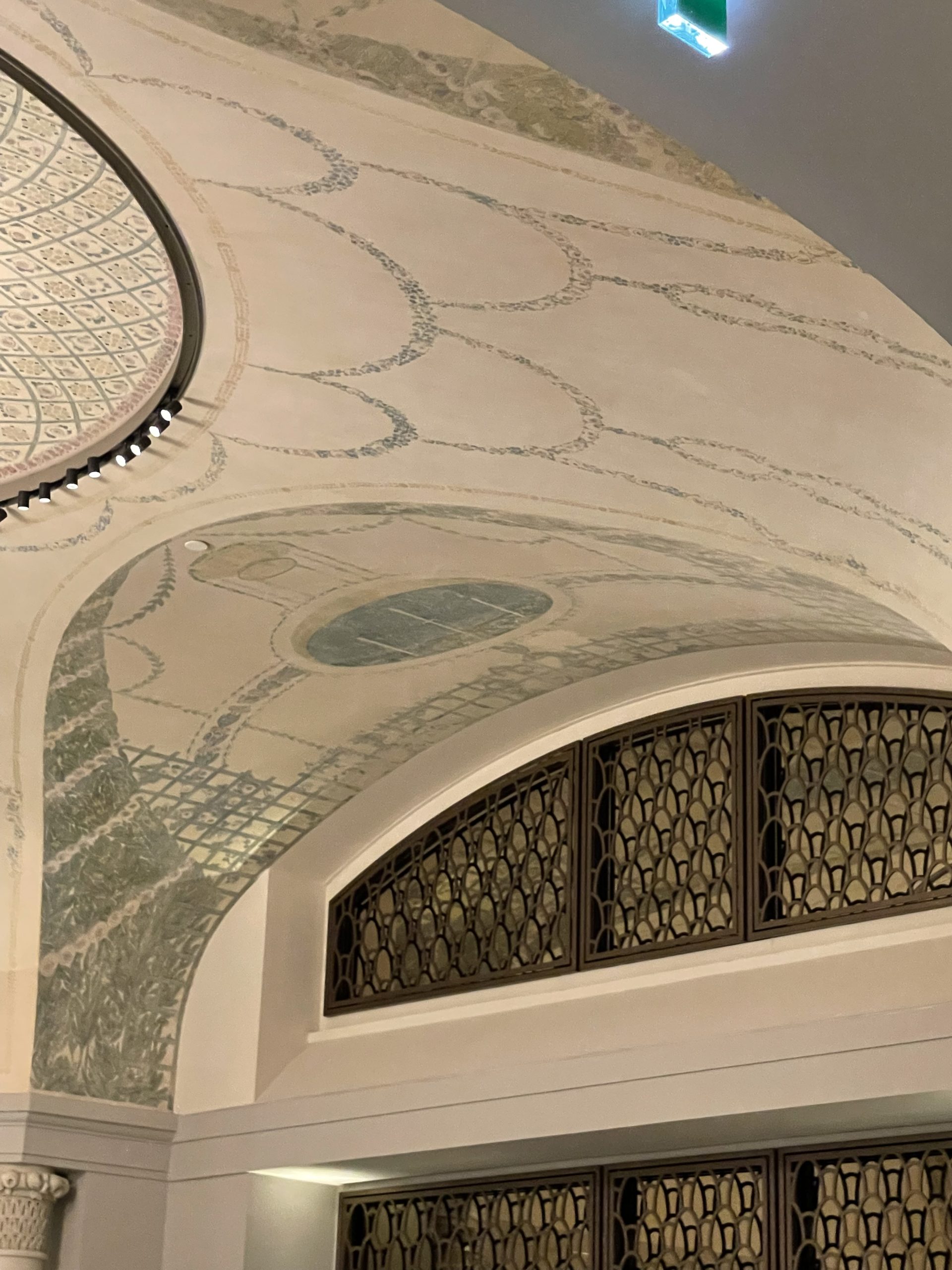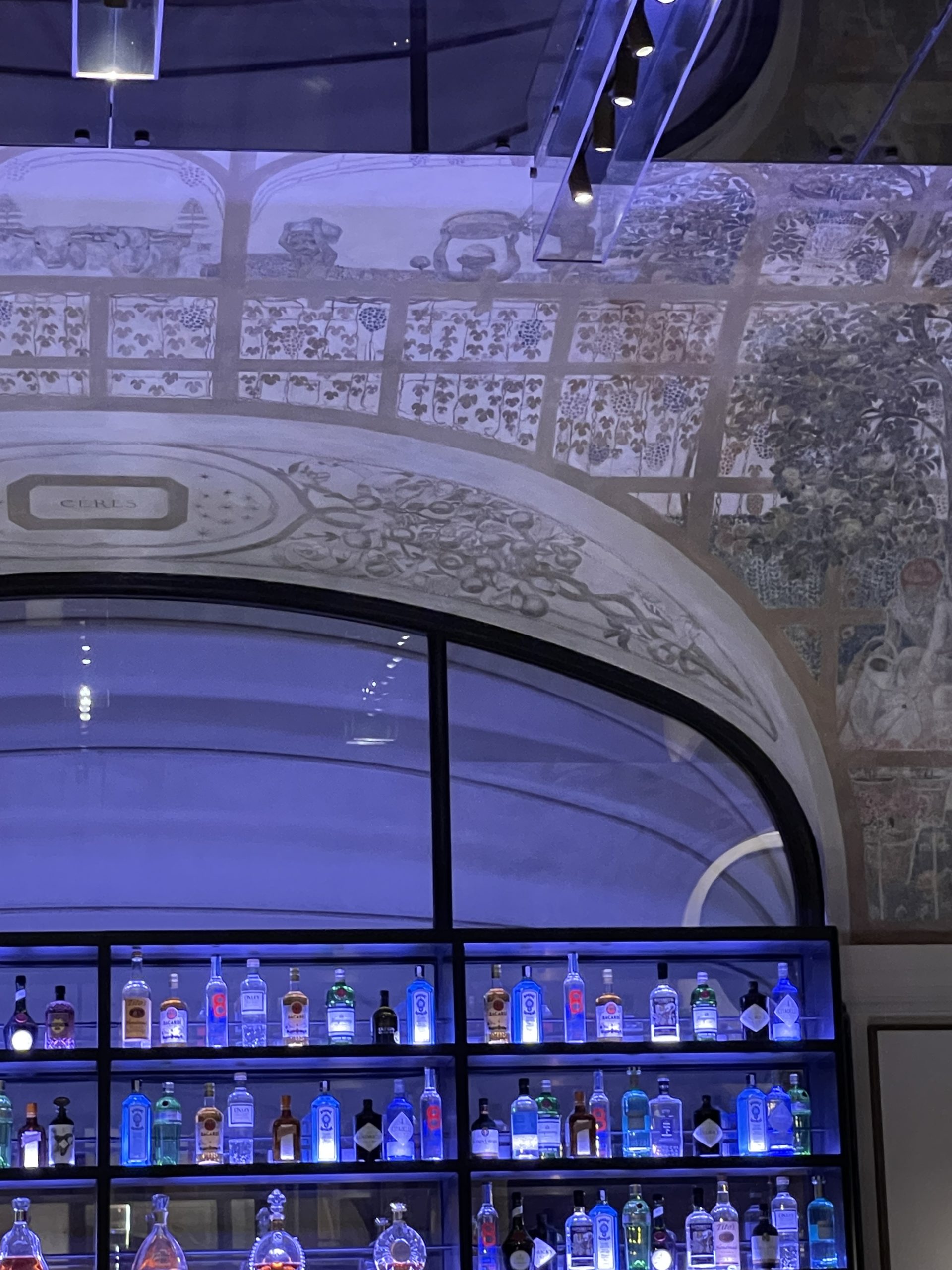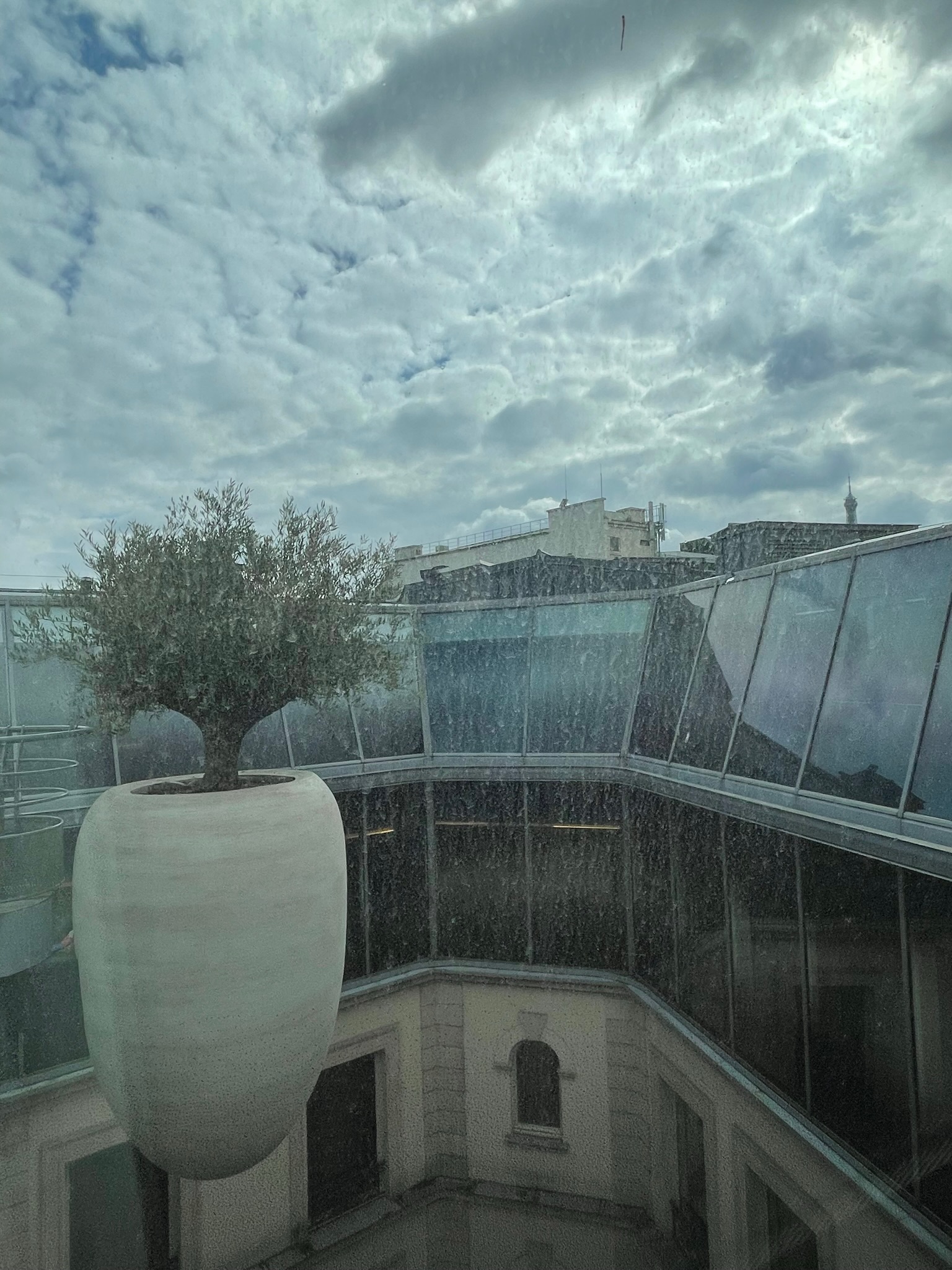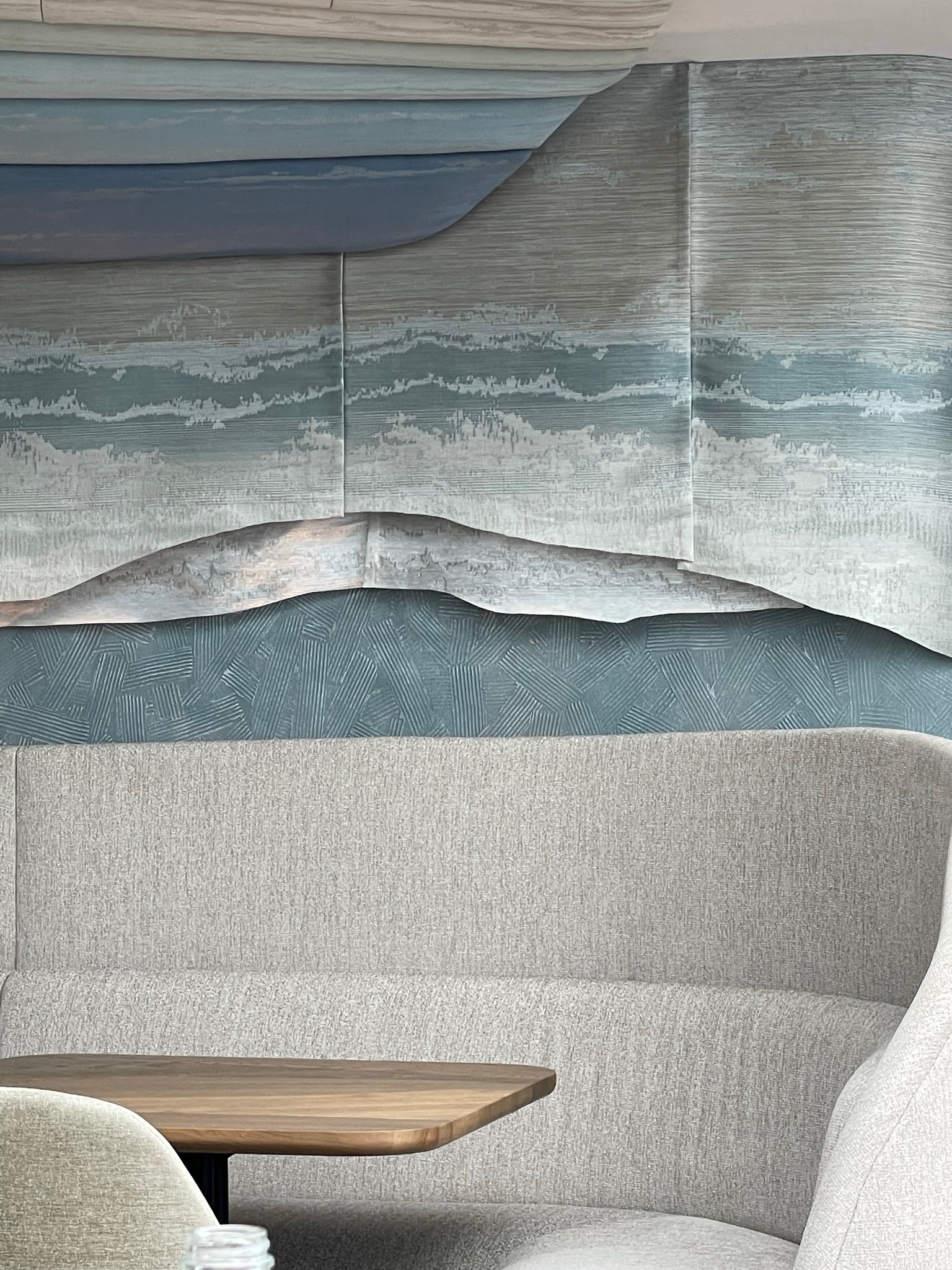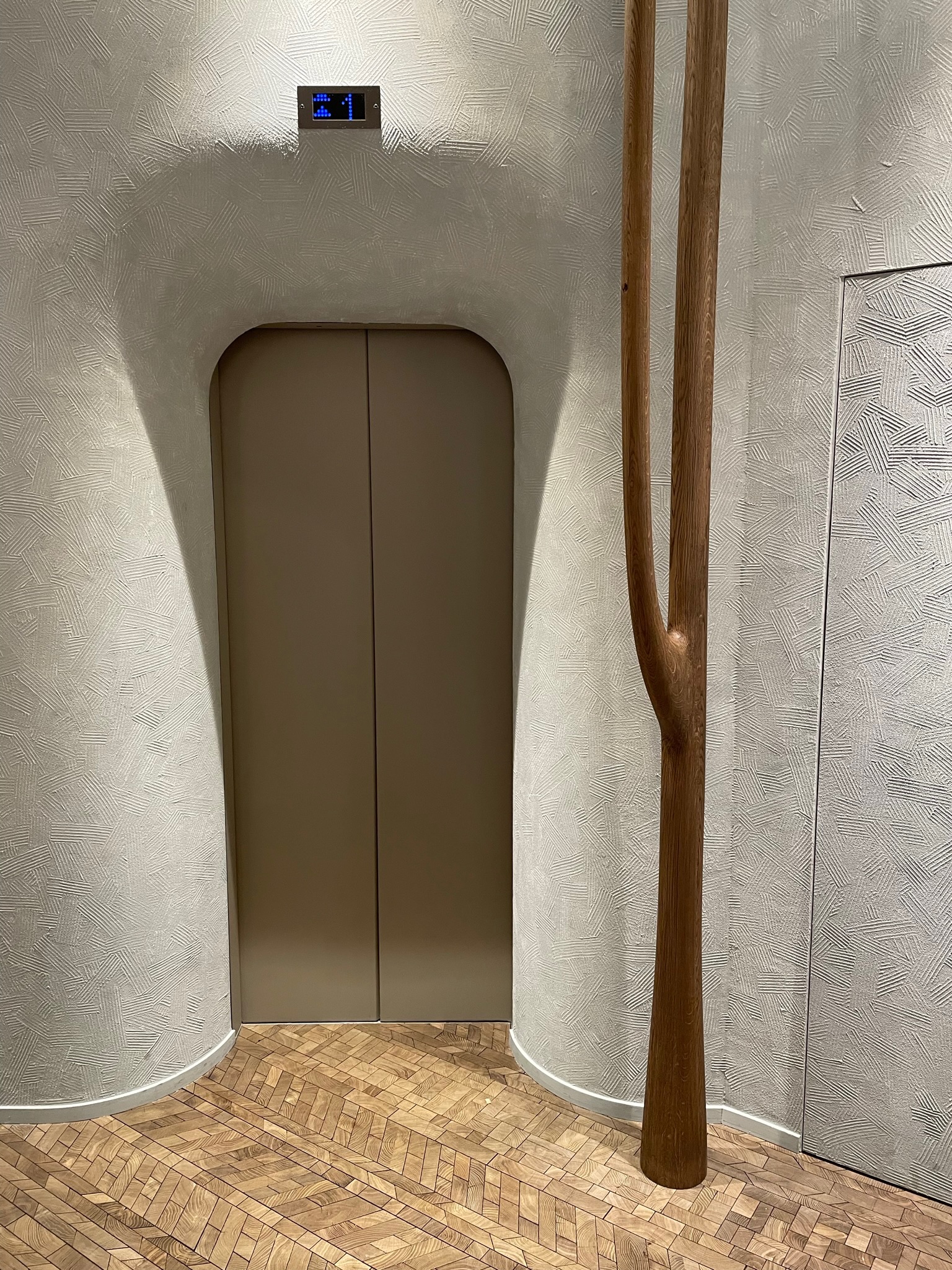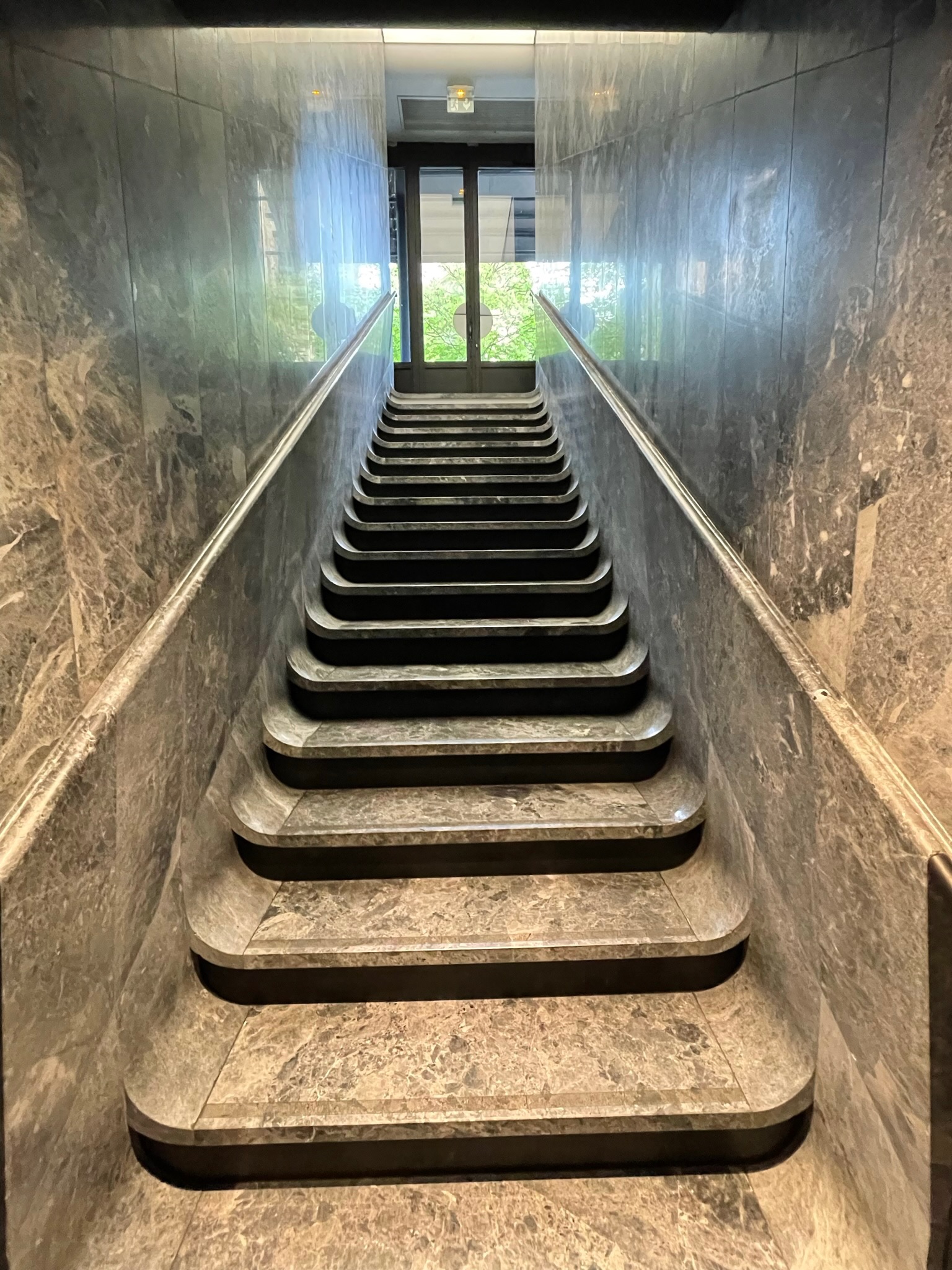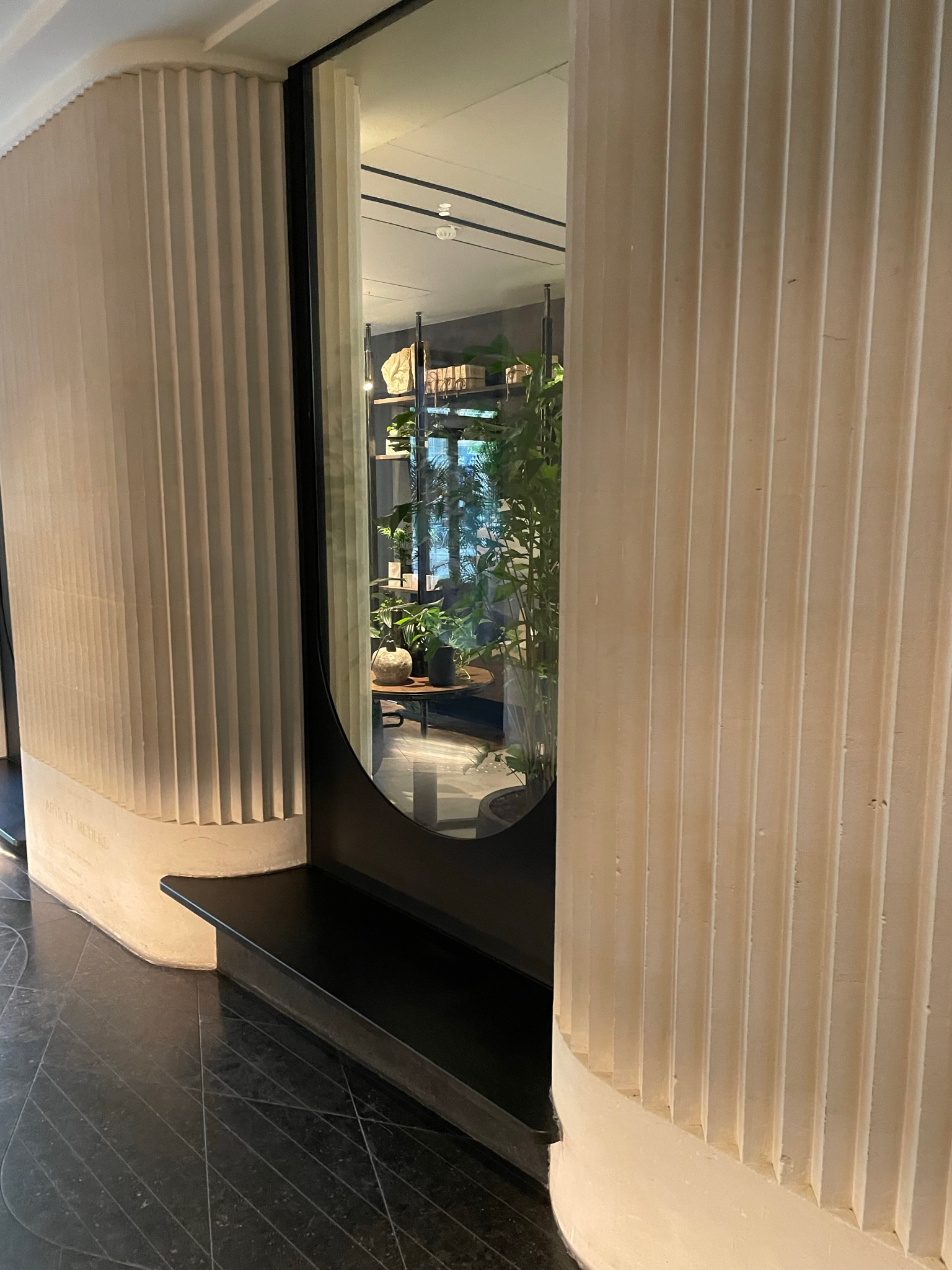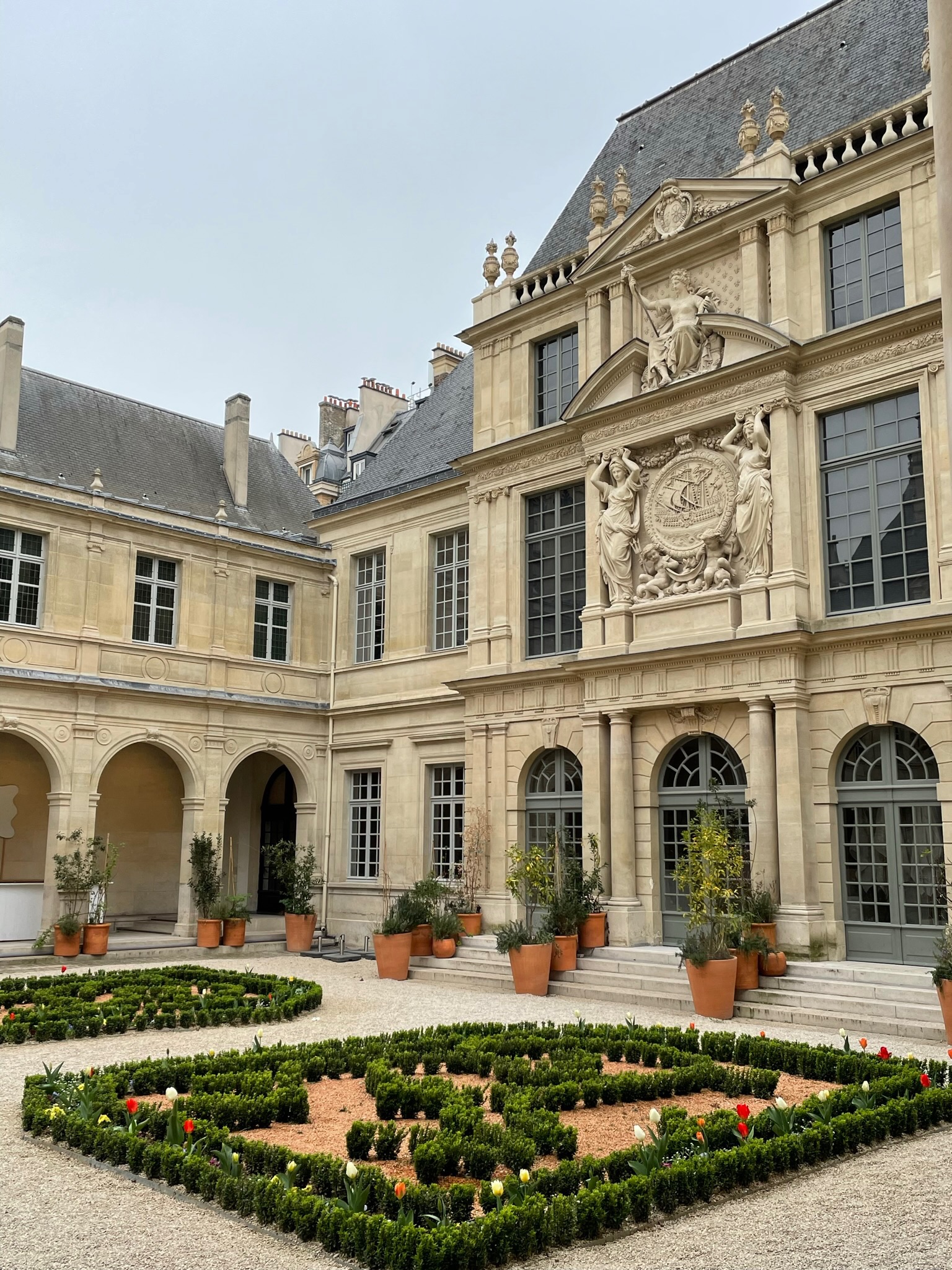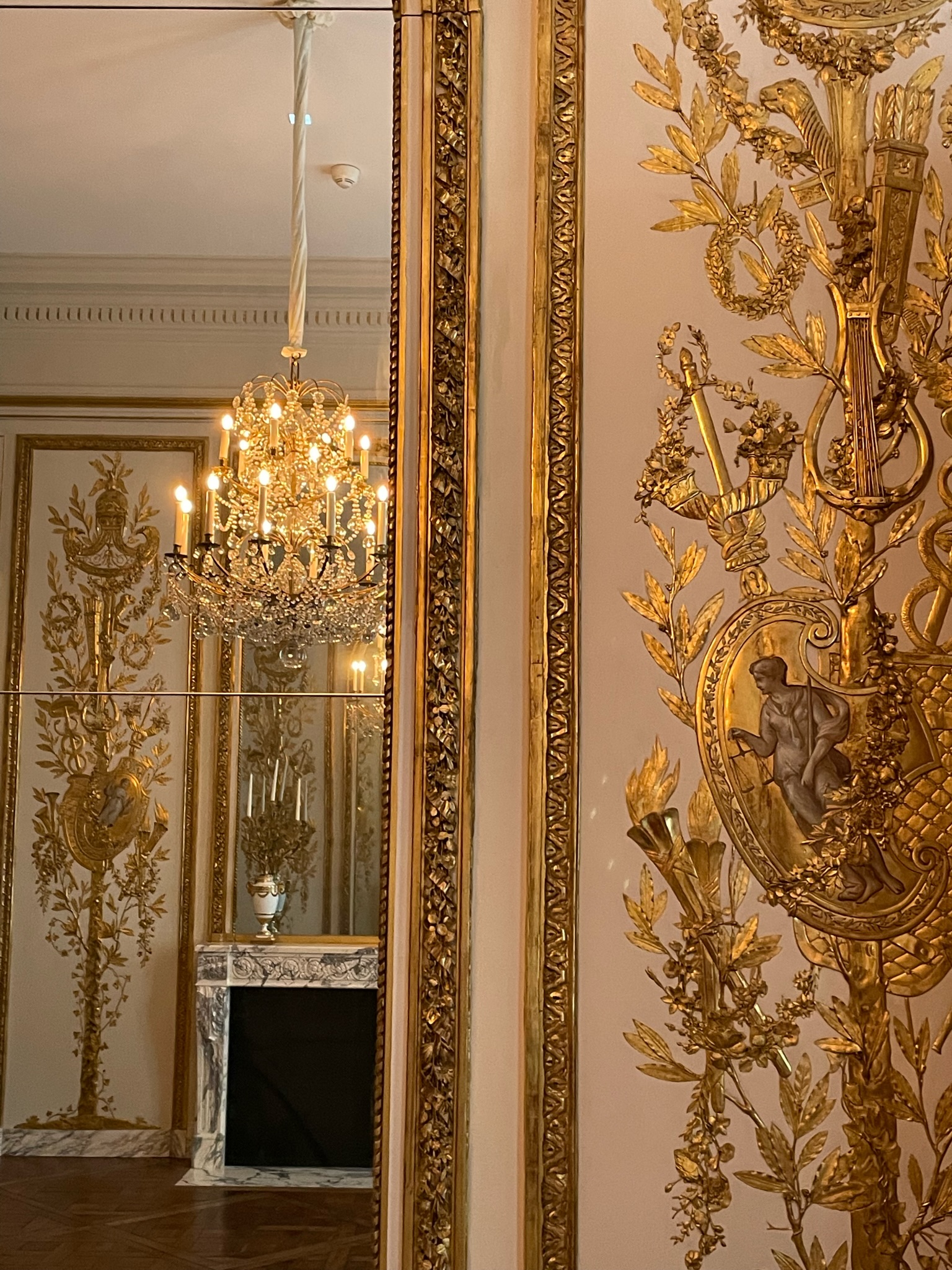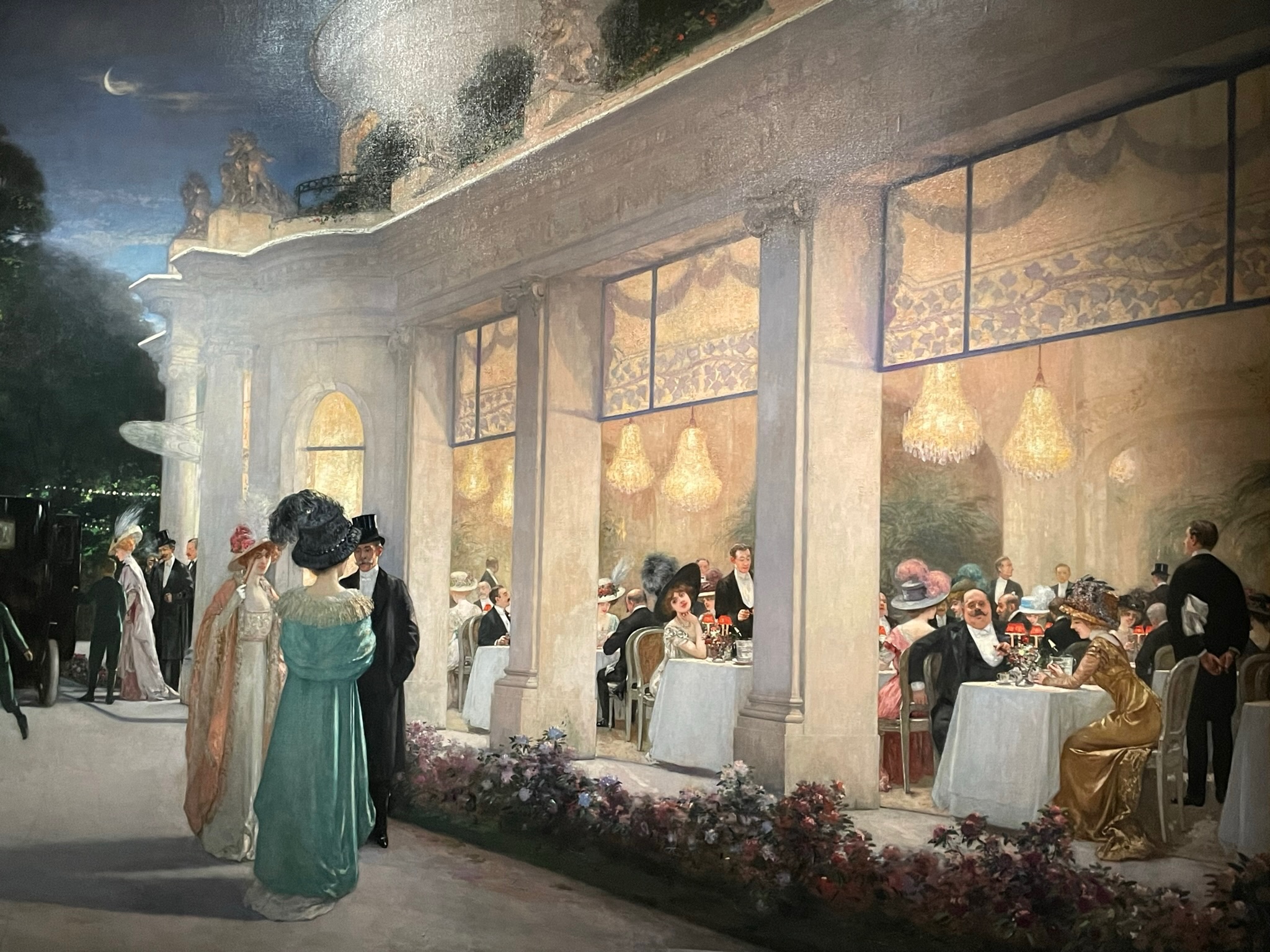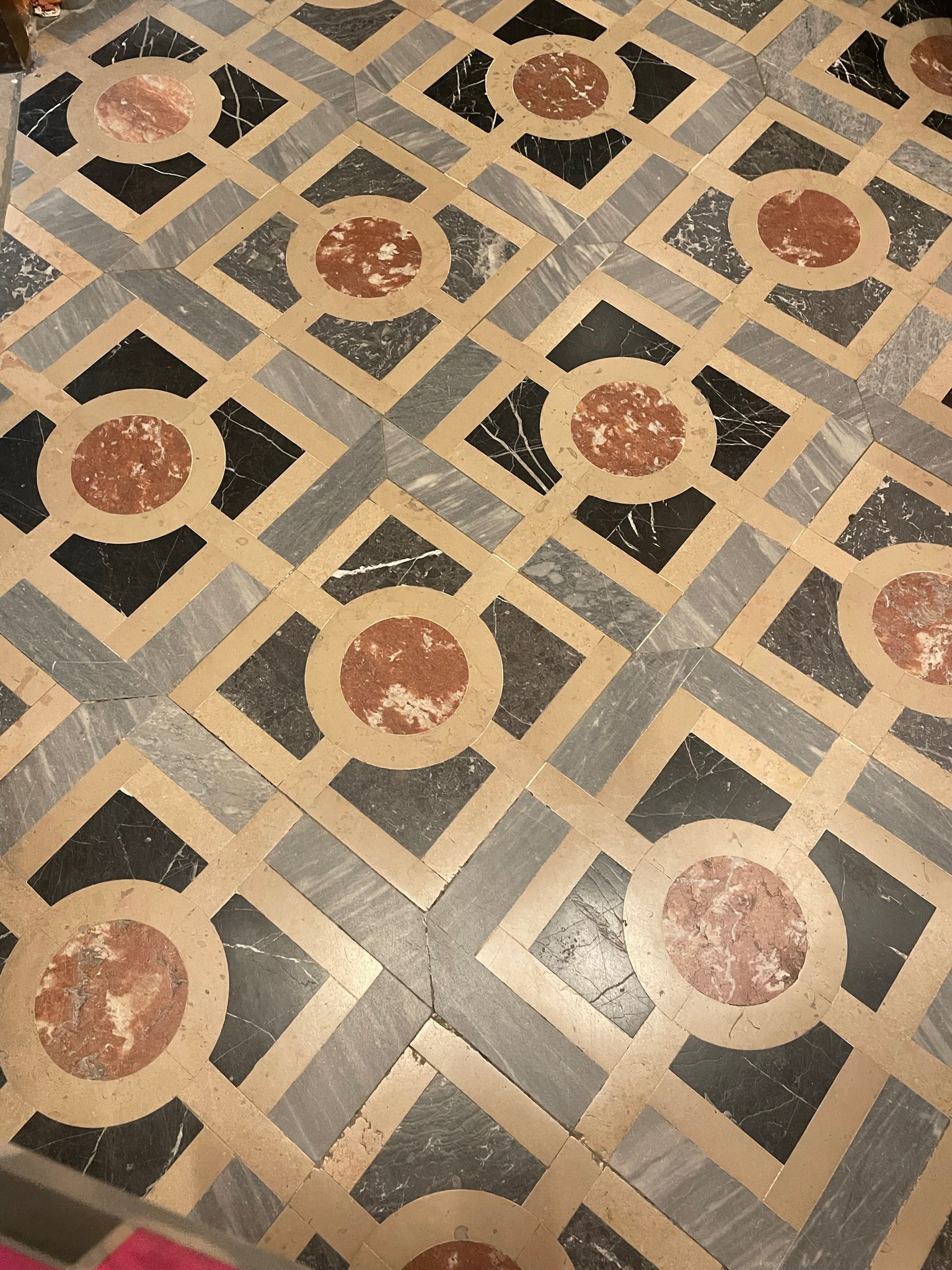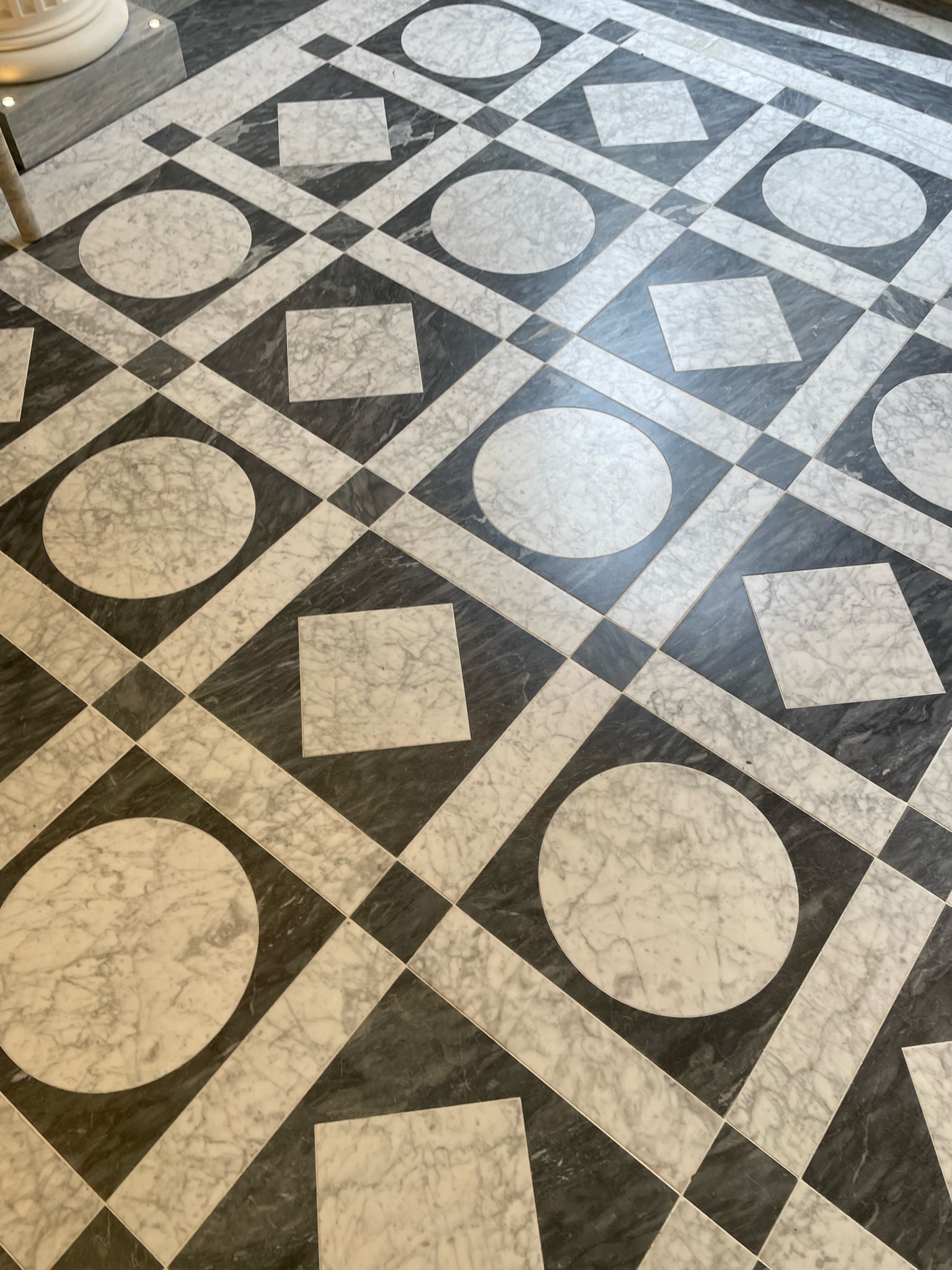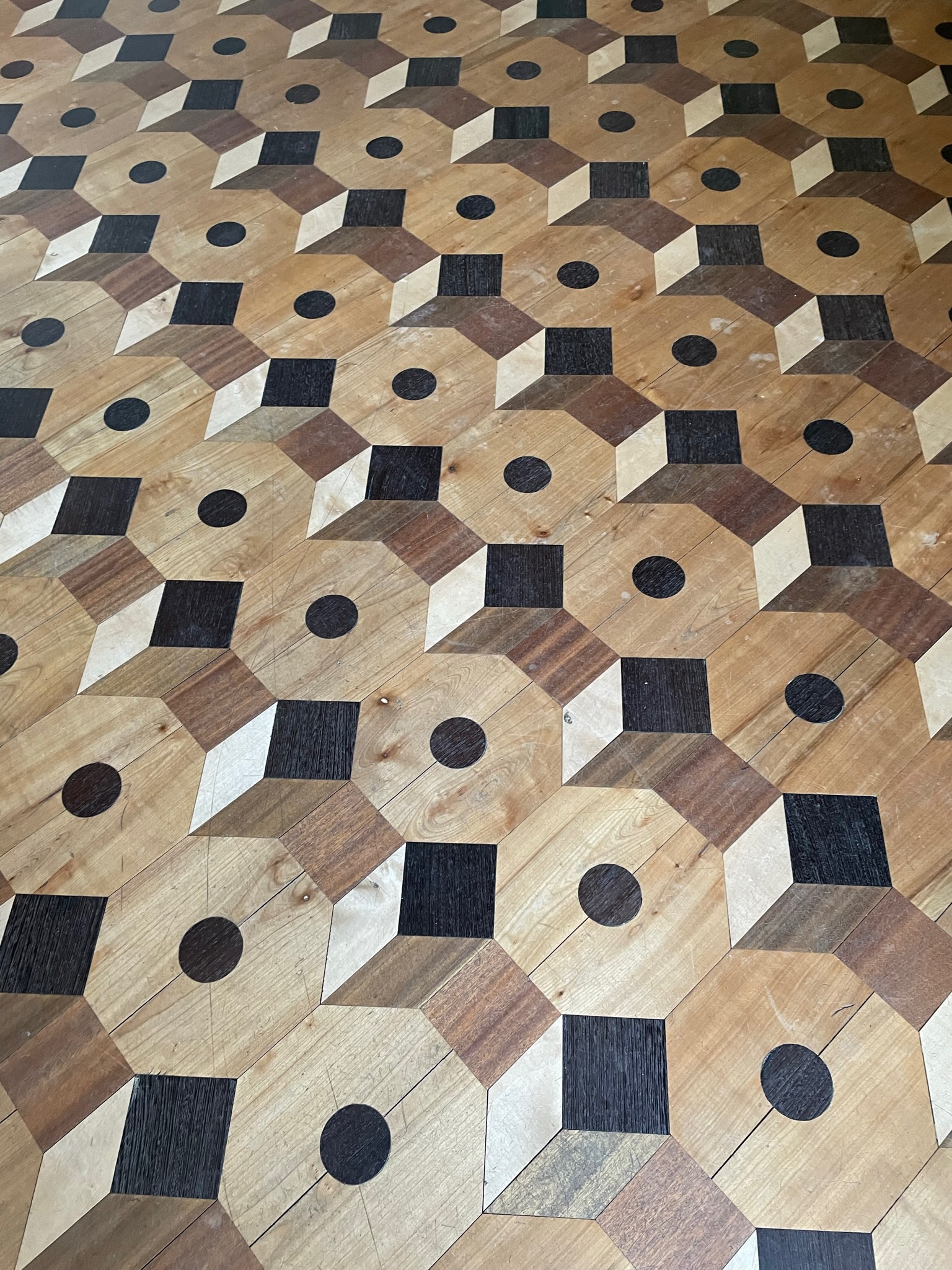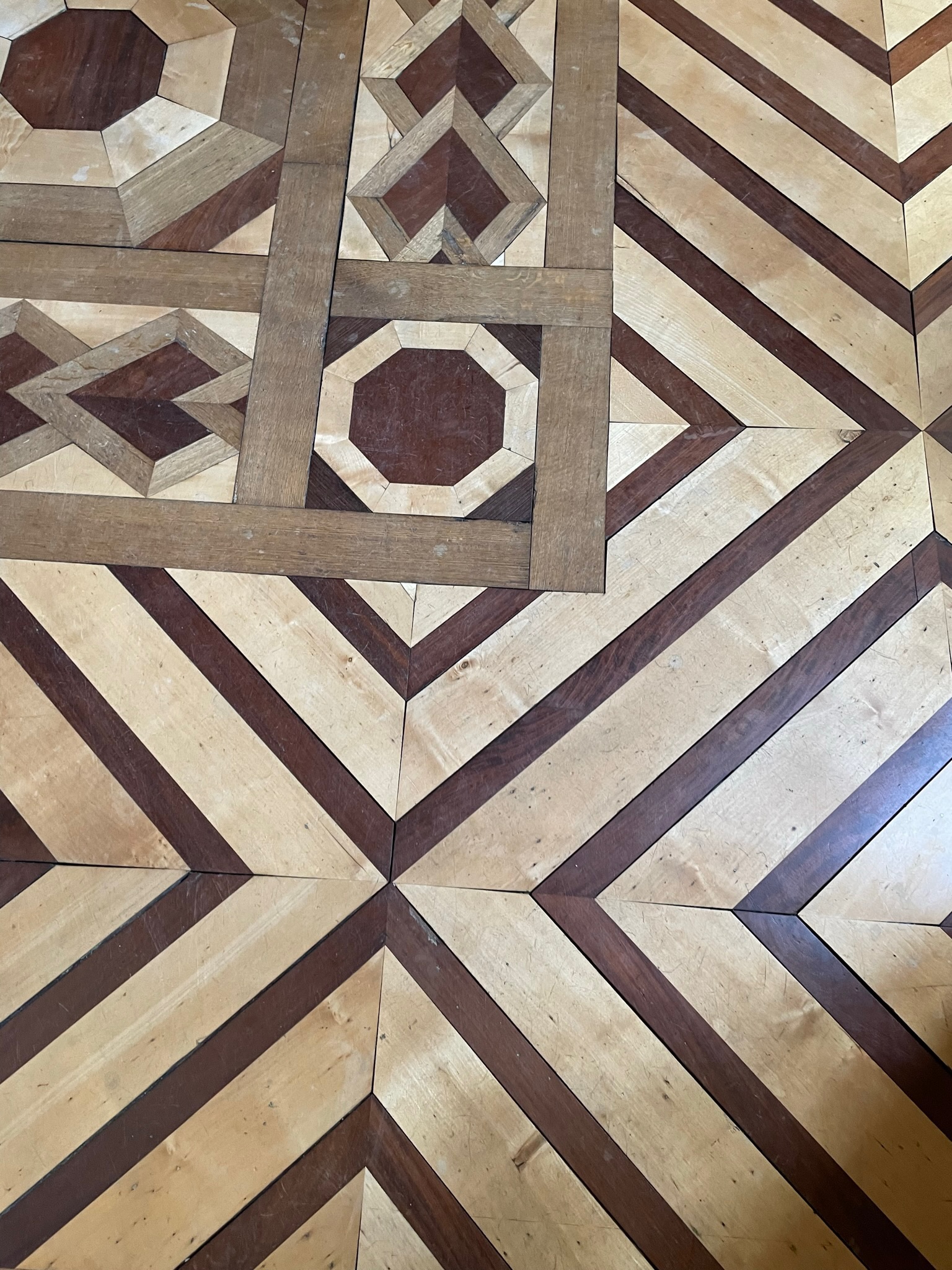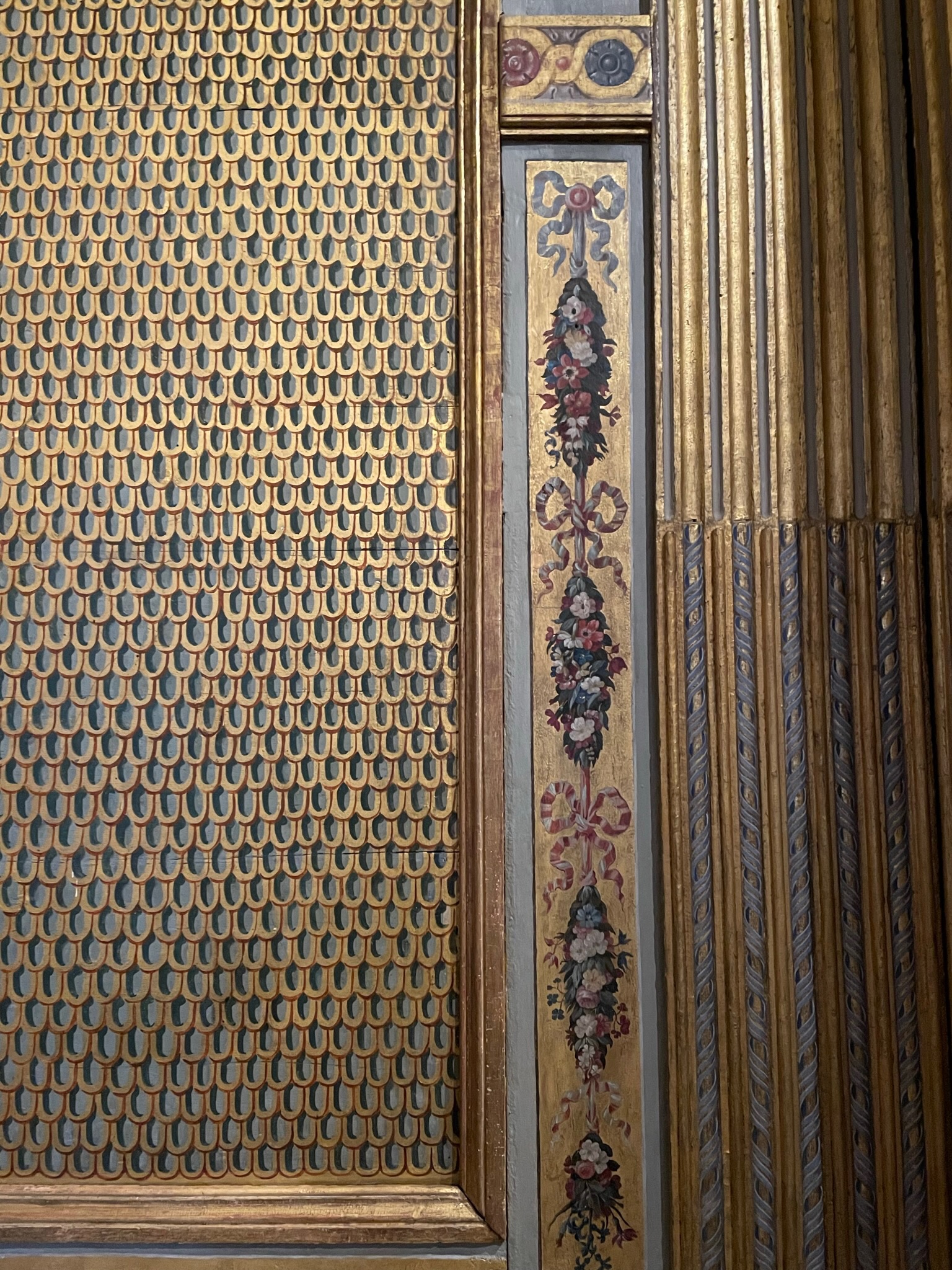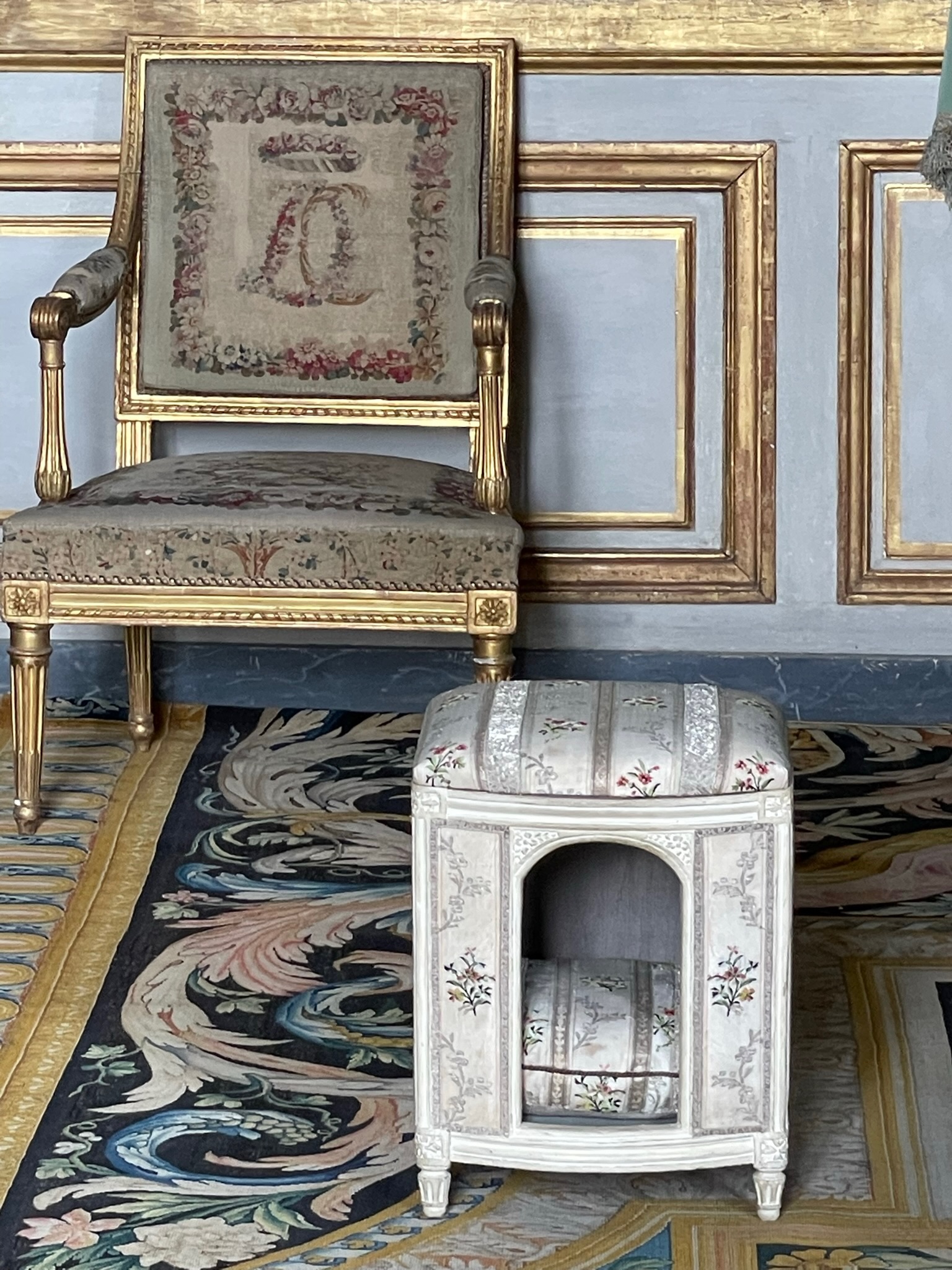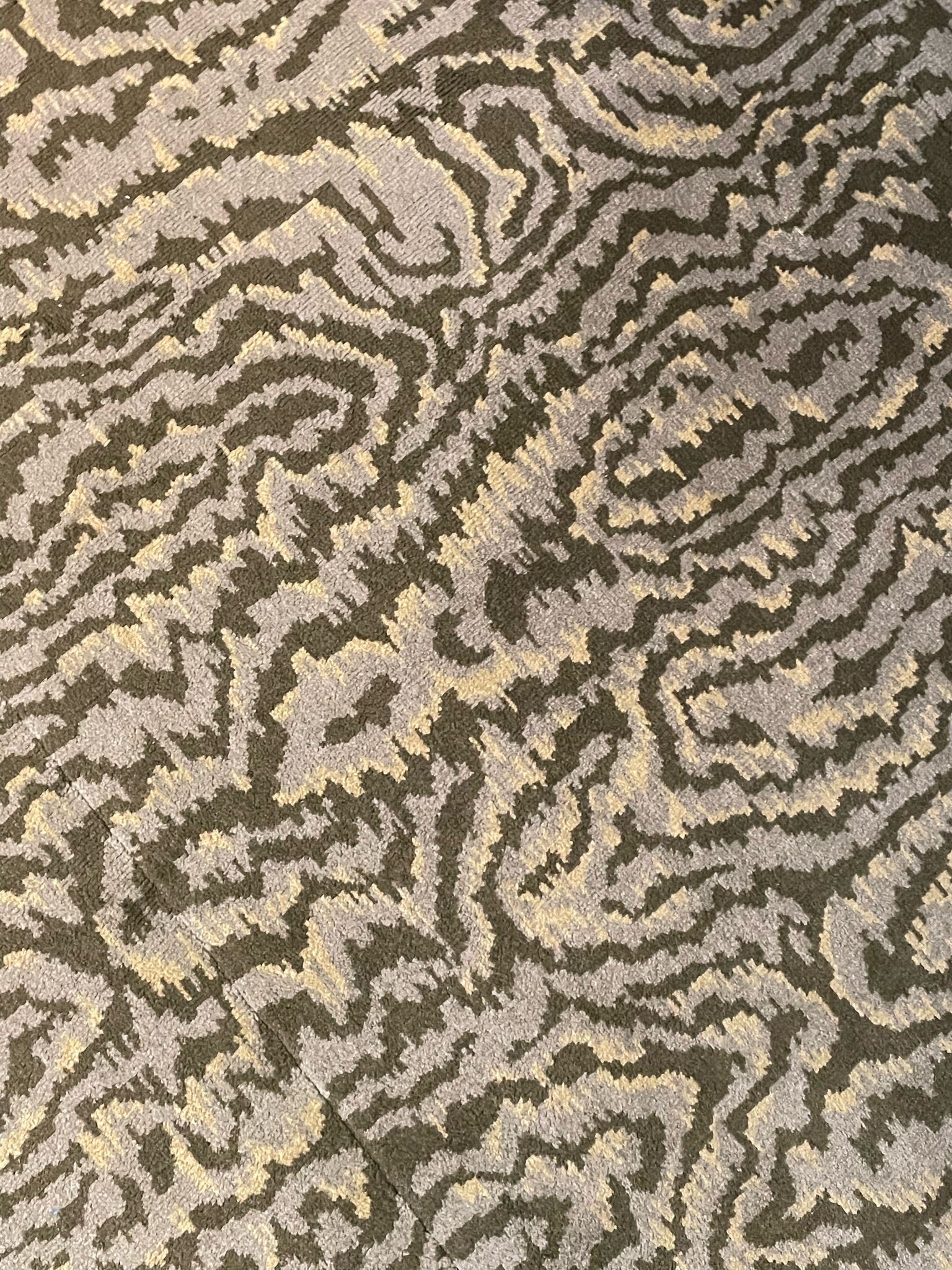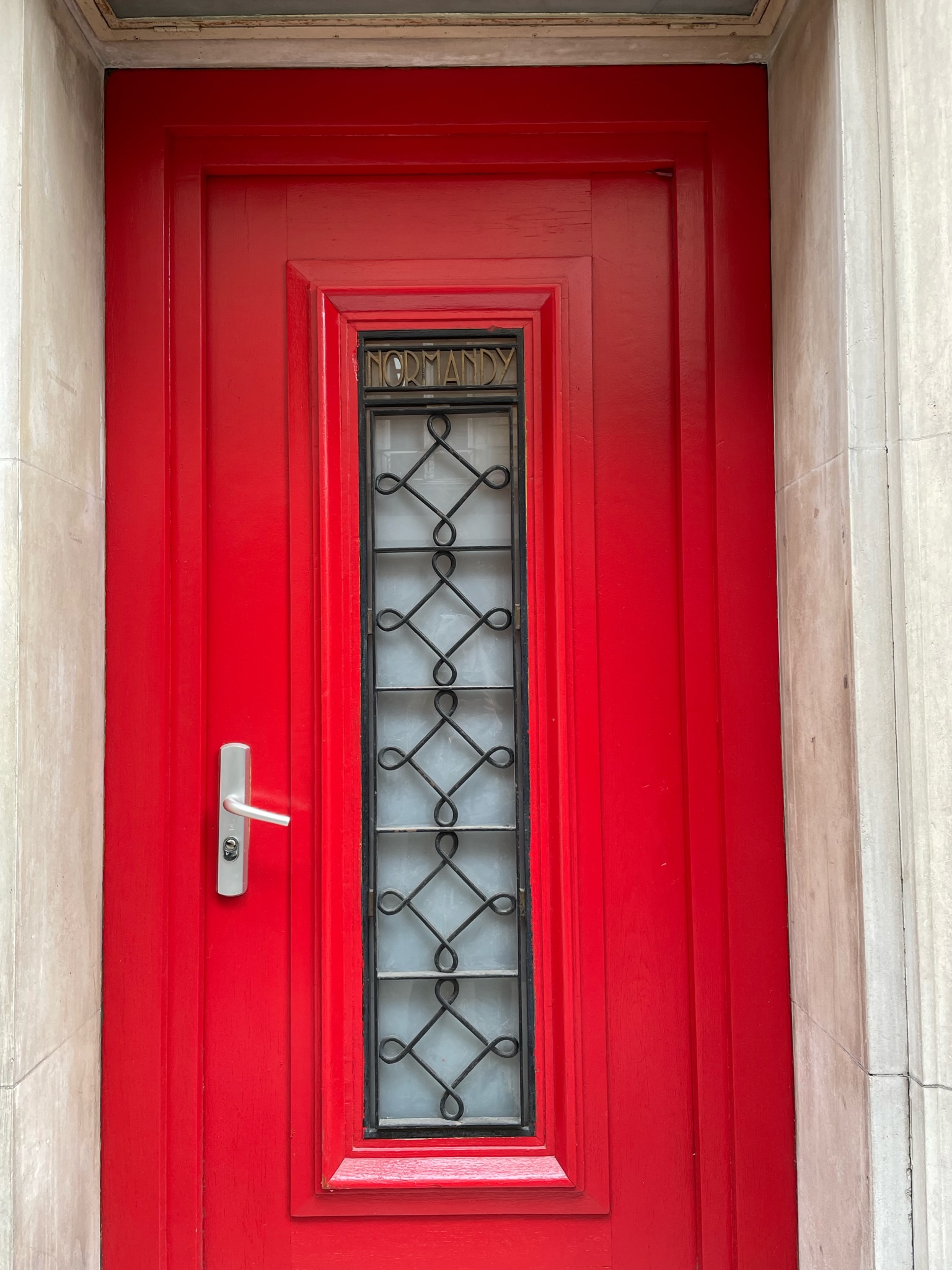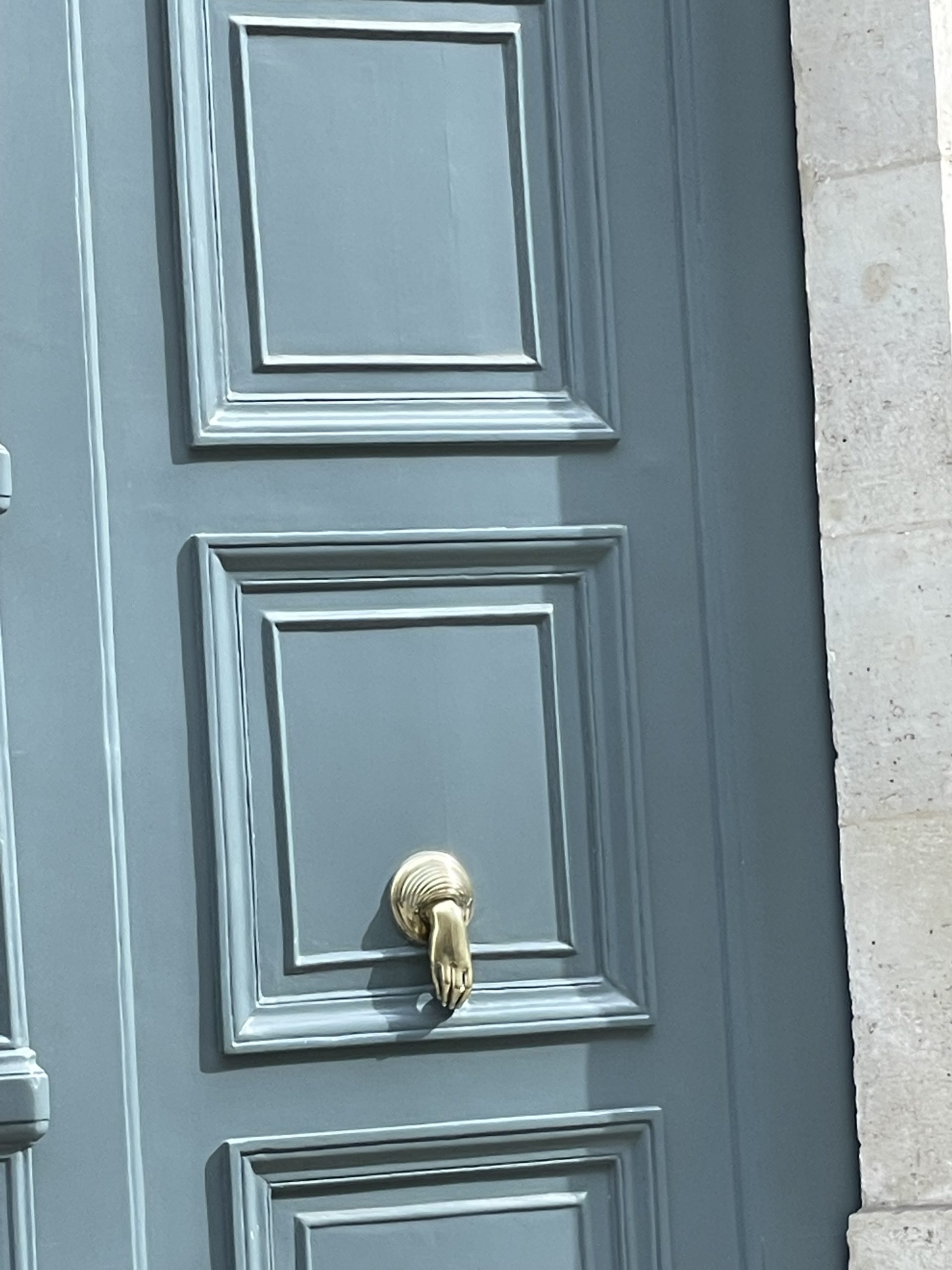In late March, I had a reunion I had been dreaming about for 2 years. I was about to see again what felt like a long-lost friend. Driving down the cobblestones of the Champs-Elysées on a crisp spring morning, a glorious sight came into view: the Eiffel Tower, the Place de la Concorde, the Louvre, the Seine and in the distance Notre Dame. My old friend was just as glorious and magical as I had remembered. Paris, ah Paris! Paris has long held a fascination for writers, artists, and visitors alike. It is a town of constant inspiration, so instead of interviewing a designer for this “What Inspires Me” column, I decided to write about a place filled with constant inspiration.
The last time I was in Paris was in late February 2020. The word “Covid” was starting to be heard. By the time I flew back to NYC on March 1, 2020, Italy was in lockdown and the rest of the world soon followed. In mid-March of 2022, when I had the chance at the last minute to visit Maison et Objet, the design fair in Paris, I jumped at the opportunity as I couldn’t wait to see her again. New York City has had a somewhat hard road to recovery with so many shops and restaurants still closed. In Paris, I didn’t see that but instead there was a sense of renewal. The city was shining brightly, and newly restored institutions were re-opening. Paris was undergoing a revitalization to prepare for the upcoming Summer Olympics in 2024.
Hôtel de la Marine
My first stop was at the recently restored Hôtel de la Marine, as I was so looking forward to seeing the exquisite work that was carried out by our artisans at Declercq Passementiers and Atelier de Ricou. I arrived at the grand 18th-century building that is the twin to the building across rue Royale housing the Hôtel de Crillon and is situated on the corner of the Place de la Concorde. Upon arriving at this building, I walked through the portico and into the courtyard and spotted the restaurant, Mimosa, whose chef is one of my favorites, Jean-François Piège. I love his other Parisian bistro, La Poule au Pot, located at 9 rue Vauvilliers in the 1st. A spot of lunch was needed before I would spend the afternoon immersed in 18th-century life touring the Hôtel de la Marine.
After eating a delicious lunch of Mediterranean fare and most importantly cake for dessert, I was thrilled to finally walk through the doors of the Hôtel de la Marine and was immediately transported back into a grand life that was taking place in the mid to late 1700’s Paris. This historic building was built between 1757 and 1774 by Ange-Jacques Gabriel, chief architect to Louis XV who also built the Petit Trianon. It opened in 1775 and for a brief 15 years, it was home to the Royal Wardrobe, which was in charge of furnishing and decorating the palaces of the monarchy. It also housed the royal art collections as well as the famous crown jewels. After the French revolution, the building served as the Ministry of Navy for more than 226 years (hence the name Hôtel de la Marine (Navy)). In 2017, after the Ministry of Navy had moved out 2 years prior, a huge restoration project was initiated by the Center for National Monuments to bring this building back to its original historical glory, and was completed and opened to the public in 2021. Now, the public is treated to walking through 18th-century gilded ceremonial halls and the luxurious private apartments of the administrators of the Royal Wardrobe with the original walls, doors, and floors restored back to their original splendor and with most of the original furniture and art returned too. Throughout the history of this building, it was never altered so it is considered an authentic model of 18th-century building skills and craftsmanship.
When I stepped into the office of the Intendant, I spotted my first Declercq Passementiers tassel. Exquisitely handwoven, the grey tassel was used as a tieback for the yellow curtains in the corner. The furniture and decorative wall panels of painted silk were equally beautiful but I was transfixed by the bold pattern in the parquet floors. It was a pattern that could easily be in a 21st-century home today.
I rounded the corner and entered the first of many splendid bedrooms. The bed tucked into the wall niche felt like something out of a fairytale. The grey silk fabric was shimmering in the candlelight and I walked up close to the bed to see more incredible handiwork done by Declercq Passementiers. Their rosettes, tassels and fringed passementier added an even more luxurious detail to the bed. And adorning the curtains in the room were more tassels made by Declercq with such special details.
I then entered the dining room and the audio guide gave a fascinating story about the table. The first Intendant moved in around 1775 and he created a “flying” (elevating) table in this dining room. The table was equipped with a mechanism that lowered it to the floor below where the servants could set and clear the table without having to enter the room and perhaps be privy to a private conversation. This was such a novelty that not even Versailles had anything like it. I also read that the reconstructed table setting is based on a painting that I had recently loved seeing at the Musée Condé at Château de Chantilly near Paris, “Dining on Oysters”, 1735 by Jean-François de Troy. They even included a basket on the floor with oyster shells tumbling out. This dining room really offers a glimpse into a space that feels like a party just took place reflecting the joie de vivre of the period.
I passed through a small room where I marveled at the trompe l’oeil wallpaper. It was part of a small physics lab that the Intendant set up because it was after all the age of Enlightenment and he had a keen interest in science outside his daily duties for the Royal Wardrobe. He also had a penchant for making imitation gemstones so the wallpaper reflected this interest in minerals. They really thought about everything in their design decisions. While entering another room that takes up the corner overlooking rue de Rivoli and Place de la Concorde, I noticed something quite odd. There were several small holes cut out in a few of the shutters. Through one hole I took a photo of the Place de la Concorde and it felt like I was peering through the lens of a camera capturing a stolen moment. I then heard that the holes were intended for a more sinister purpose. During WWII, the building was occupied by the German army and they used these holes to spy on the main streets surrounding them. I quickly turned to admire instead the two magnificent Gobelins tapestries lining the walls of the room.
I thought that the first bedroom I had seen was straight out of a fairytale well the room I was about to enter felt like a room fit for a Queen. This was the bedroom of the wife of the Intendant. The domed canopy bed resplendent with feathers on top seemed like something designed for Marie Antoinette. The rosettes, tassels, and trimmings on the bed, the golden bell pull over the bed and one next to the door, and the large ornate tassels and tiebacks on the curtains made the room feel so luxurious. I was so thrilled to see how the artisans at Declercq Passementiers used their expertise and skills in making by hand what looks like historical pieces.
With Marie Antoinette on my mind entering the next room gave me pause to reflect. For at this small table overlooking the grand loggia her death warrant was signed and her execution that took place in the center of the Place de la Concorde was viewed by many standing on the loggia just outside the window. History abounds in this building.
I proceeded to walk through one splendid room after another spotting more beautiful tassels and bell pulls crafted by Declercq Passementiers.
There were so many more beautiful rooms I visited, including the ballroom that rivals Versailles’s Hall of Mirrors, but I want to leave some element of surprise for when you can visit this special place. My final visit was to the grand loggia overlooking the Place de la Concorde with what felt like front row seats to the beauty of Paris spreading out before you. From the left, the rue de Rivoli with the Louvre and the Tuileries Garden then the view of the Seine with the National Assembly and the Invalides in the background, and then turning right towards the Eiffel Tower and the Grand Palais and finally resting one’s eyes on the Place de la Concorde and the sounds and pace of modern Parisian life bring you back to the 21st century.
When Louis XV commissioned this building to be built in the mid 1700s, he wanted it opened to the public during the 15 years the Royal Wardrobe was based here. Now more than two centuries later it is reopened to the public and is a rare surviving example of 18th-century French lifestyle. Once home to priceless objects that constituted the height of French craftsmanship it underwent a huge restoration using the skills and expertise of French craftsmen to showcase the French “art de vivre”. The restoration was overseen by the architect Christoph Bottineau and the interior designers Joseph Achkar and Michel Charrière. This renovation reveals the extraordinary talent and skills of all the artisans involved in this “rebirth” of a refined residence of the Enlightenment era and it evokes a fine example of French lifestyle and savoir-faire. This truly is a must-see.
(To read more about the history of the building and the restoration project accompanied by glorious photographs I highly recommend the beautiful book The French Royal Wardrobe: The Hôtel de la Marine Restored by Jérôme Hanover and Gabriel Bauret, published in 2021).
Féau Boiseries
The day was not quite over as I had another place to head to that I have been so looking forward to seeing. As part of “Maison et Objet in the City” so many design spaces opened up for “behind the scenes” viewing. Two years ago, I bought the book, Féau & Cie: The Art of Wood Paneling, published by Rizzoli in 2020, and was mesmerized by the beautiful wood panelings they had from the 17th century to today. But it was also their atelier that I was eager to see as it was another place where you felt like you were stepping back in time. When I arrived at the location in the 17th arrondissement seeing the beautiful small façade did not prepare me for the magnitude of what I would see inside. It has been in this same location since 1875 and once you enter you go through room after room after room filled with antique and reproduction wood panels. It is like a maze of treasures. The pinnacle is reaching the last room which opens up into a double-height ceiling with sun streaming through the skylight. I was excited to learn that the metal frame of this skylight was made by Gustave Eiffel! This magical atelier is like traveling through the history of French interior design and decorative arts.
Le Cheval Blanc Hotel, Langosteria restaurant and La Samaritaine
Day two: I arrived at the new 5-star hotel Le Cheval Blanc on the Right Bank overlooking the Pont Neuf. I am meeting a dear friend for lunch and for an afternoon of design sightseeing.
We meet in the lobby of this new hotel, which was designed by the architect and interior designer Peter Marino. He worked with several talented French artisans and artists including Lison de Caunes to create a wonderful example of French luxury and craftsmanship. We step into an elevator to head to the 7th floor for lunch when we are suddenly surrounded by an experiential installation by the lighting designer Thierry Dreyfus. A video surrounds you offering breathtaking views of the Seine and the Eiffel Tower. It feels like you are in a glass elevator on the outside of the building. We had a lovely lunch at Langosteria, the Italian seafood restaurant, a “branch” of Langosteria in Milan. They have a beautiful terrace overlooking the Seine and the Eiffel Tower which will be perfect when the temperature warms up. After a delicious meal we head to the newly reopened La Samaritaine department store that shares the building with the hotel. In the late 1920’s the architect Henri Sauvage oversaw the completion of a large Art Déco building for this Parisian department store. It was a much loved and popular shopping destination until it closed in 2005 and it stood vacant for 16 years. A century after it was built it recently reopened after a stunning redesign paid for by the French luxury goods company LVMH. The past and the present come together in this stunning renovation with the original Art Déco and Art Nouveau details restored and living along side contemporary touches creating a new shopping experience for the 21st century. We took the escalators past 7 floors of luxury shopping to the top floor where the highlight is the rectangular glass roof with an Eiffel-esque iron frame designed in 1907 by Frantz Jourdain. It covers a stunning atrium that is surrounded by staircases and topped with a large gold-hued peacock mural, cast iron signs, ornate pillars, ceramic decorations and enamel tiles. Everything was restored beautifully and highlights the importance of Art Nouveau and Art Deco in French design history. While trying to find an exit we stumbled upon a photo exhibit by the 1940’s fashion photographer Erwin Blumenfeld. The way they displayed the images floating from above was a wonderful site to see. When you keep your eyes alert you can really see design inspiration everywhere.
Musée Yves Saint Laurent
We continued our “day of design” by venturing to the 16th arrondissement to see the Musée Yves Saint Laurent. Opened in 2017, it exhibits the couturier’s body of work on the legendary premises of his former haute couture house. He spent 30 years here designing his collections from 1974-2002. A highlight was seeing his studio and desk surrounded by so many things that inspired him: books, fabric samples, photos of friends he adored. You really felt his spirit and it was incredible to think that from such a small room with simple chairs to sit on so many great ideas flowed. The interior designer Jacques Grange designed the exhibition spaces to recreate the original atmosphere of this famous haute couture Maison. I loved seeing the green animal print carpet next to the yellow walls. It evoked a sense of the 1970’s when his designs were all the rage.
The Lutétia Hotel
I ended the day by stopping by the Lutétia Hotel as I wanted to see the restoration work that Atelier de Ricou worked on a few years ago. This building was built in 1910 in the Art Nouveau style. In 2018, it reopened after a 4-year restoration project. In Bar Joséphine, the original ceiling and wall decorative painting had throughout the years been covered with 4 coats of paint. After over 17,000 hours of work by several of their talented artisans, Atelier de Ricou restored it to its original splendor. Their exquisite restoration can also be seen in the beautiful original decorative painting adorning the ceiling and walls in the lobby (and in several other rooms throughout the hotel).
Le 39v restaurant and the Hôtel National des Arts et Métiers
I recently had the pleasure to interview the French designer Raphael Navot for our “What Inspires Me” series (his interview can be found on our website). I was so looking forward to seeing two places that he designed in Paris: a restaurant and a hotel. My Paris-based colleague Stephanie joined me for lunch at Le 39v. The first thing I did was go straight to the outdoor balcony that wraps around the interior open courtyard as I wanted to see the large olive tree that Raphael suspended out into the open-air courtyard. He called this an “inverted panorama” as the focus is now on this floating tree and not on the surrounding views of Paris. Back inside the restaurant, the whole place had a sculptural feel to it with rounded soft walls, curving seating areas, tactile materials coupled with natural materials including the geometric end grain flooring that he also designed. It felt like a place that enveloped you like a soft cocoon and at the same time was very futuristic. One’s senses are heightened through the delicious food combined with the incredible design surrounding you. It is so unique and really is a special place.
My next stop was to see the hotel that Raphael recently designed, The Hôtel National des Arts et Métiers, located in the 3rd arrondissement. Walking in I once again noticed the sculptural feel throughout and the use of noble materials. I asked a young man at the front desk if I could walk into the restaurant and lobby area as I was a great admirer of Raphael’s work. He suddenly had a big smile and said how much he loved working there and being surrounded by such beautiful design. He told me that I must go downstairs and see the stone staircase as that was his favorite. It did not disappoint. The stairs, wall and ceiling were clad in stone and you felt like you were walking up through the earth itself. After seeing these two spaces in person I can definitely see how Raphael is so talented as he strikes a balance between innovation and artisanship.
Musée Carnavalet
It is fitting that my last stop during my whirlwind visit back to Paris was to the Musée Carnavalet located in the Marais. This charming museum is I believe one of the best museums in Paris. It opened in 1880 and is dedicated to the history of Paris and its inhabitants and has collections illustrating the evolution of the city from prehistoric times through to the present day. The architecture itself is quite spectacular as the museum is comprised of two mansions from the 16th and 17th centuries and is one of the rare examples of Renaissance architecture in Paris. I really loved walking through the beautiful period rooms and seeing an area that had old shop signs hanging from floor to ceiling. I was happily surprised to be there on one of the last days of a special exhibition dedicated to the French writer Marcel Proust. The packed exhibition kept everyone enthralled as the exhibition evoked the Belle Époque era that he lived through and wrote about. A special treat was seeing the large painting, “Une soirée au Pré-Catelan”, 1909, by Henri Gervex. One feels like a voyeur happening upon a magical night at the famous restaurant that still exists today in the Bois de Boulogne. This painting offers an image of the chic, modern and cosmopolitan Paris at the turn of the century.
Still feeling inspired by my magical days in this city I love it was sadly time to fly back to NYC. Instead of saying “au revoir” I instead whisper “à bientôt” (until soon).
Inspiration photos from Paris
Everywhere I go in Paris I am constantly inspired by paint colors, carved doors, unique floor designs, clever door knockers…the inspiration is endless. I hope these photos will inspire you.
All pictures from Jennifer Gyr

